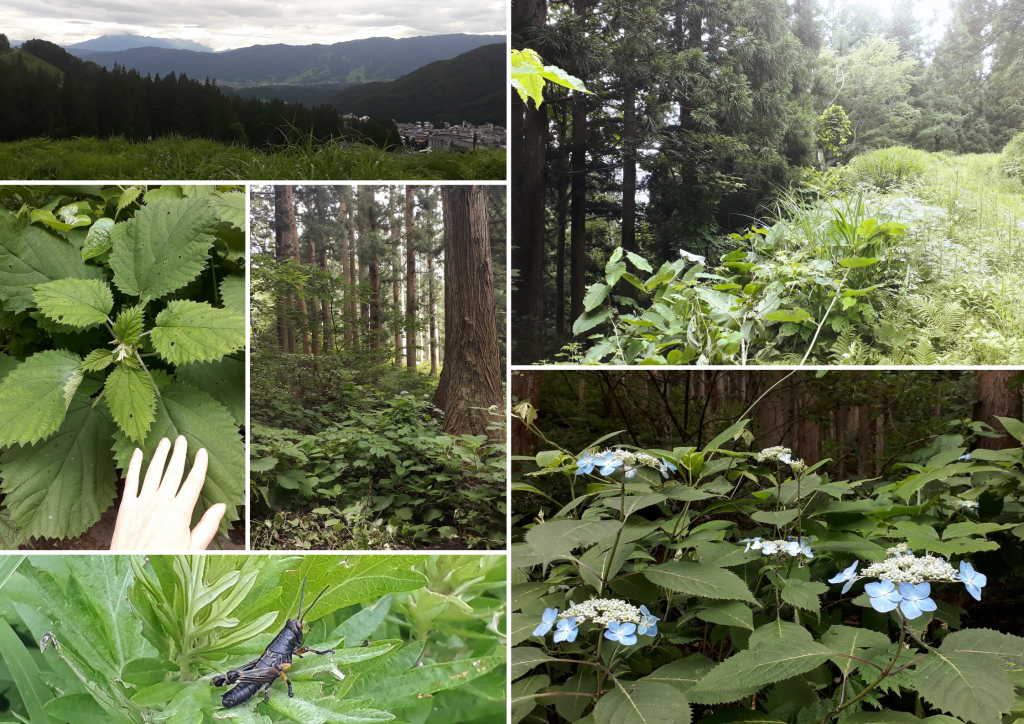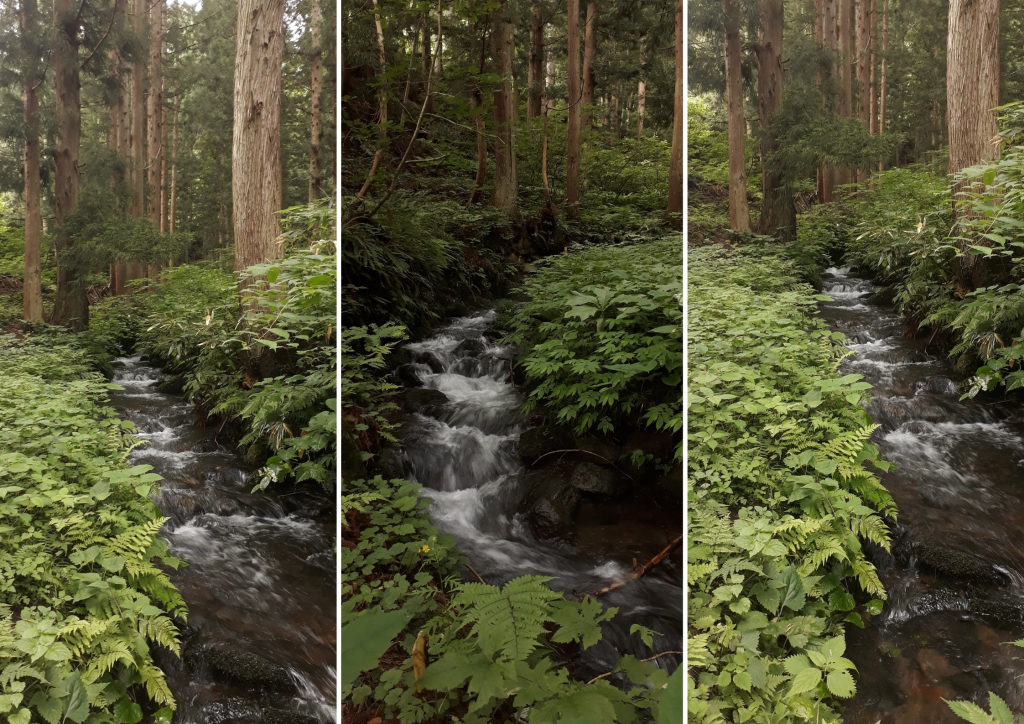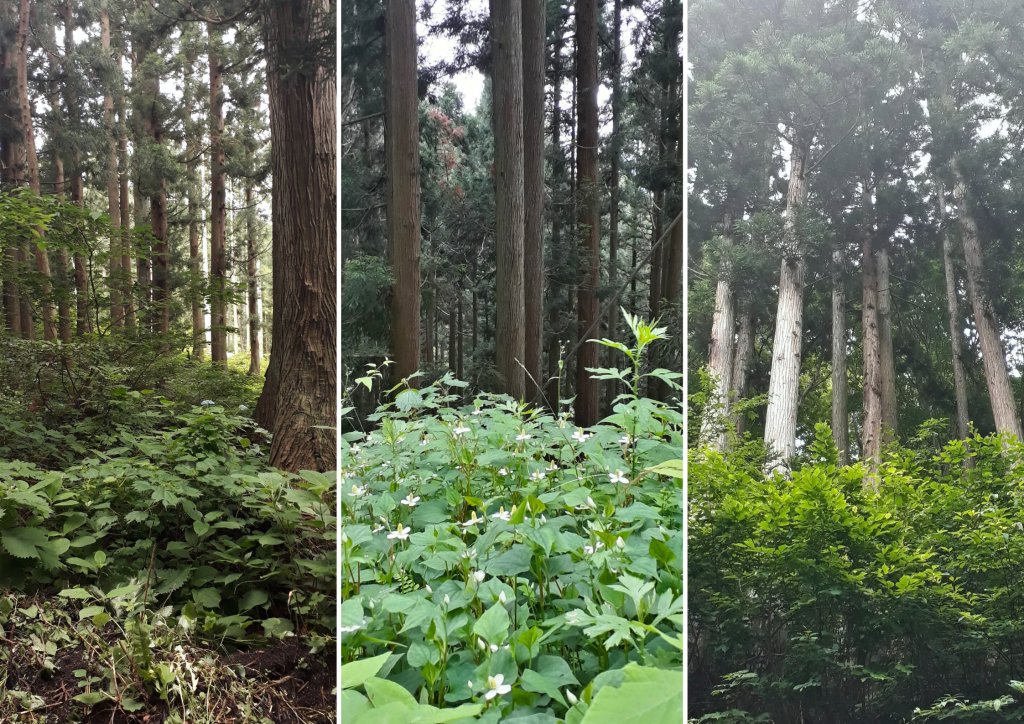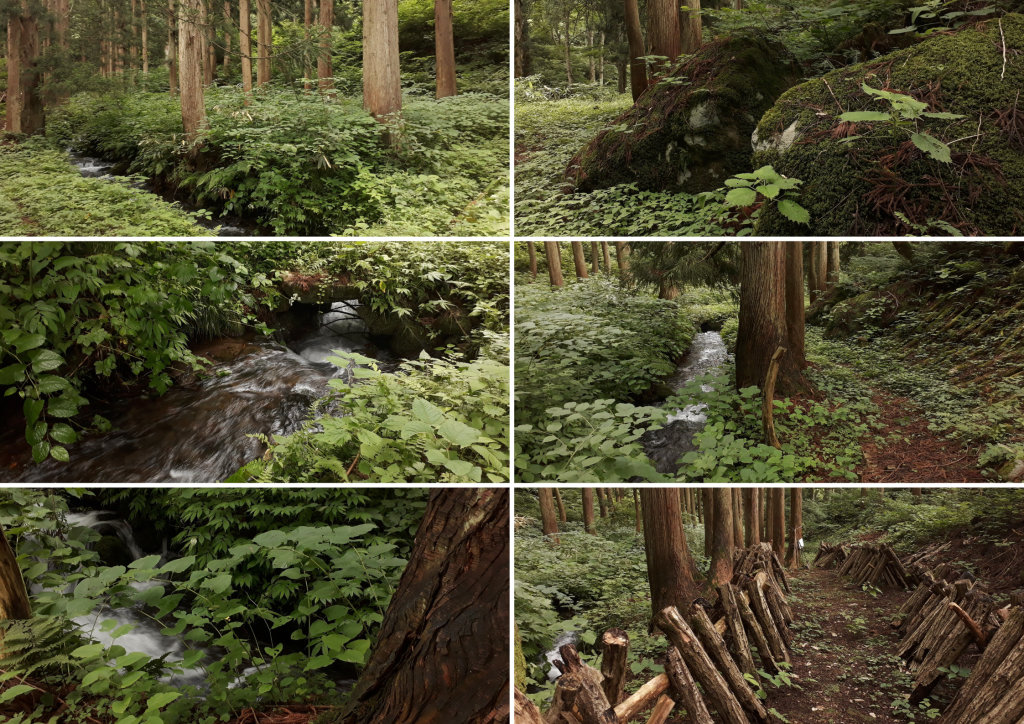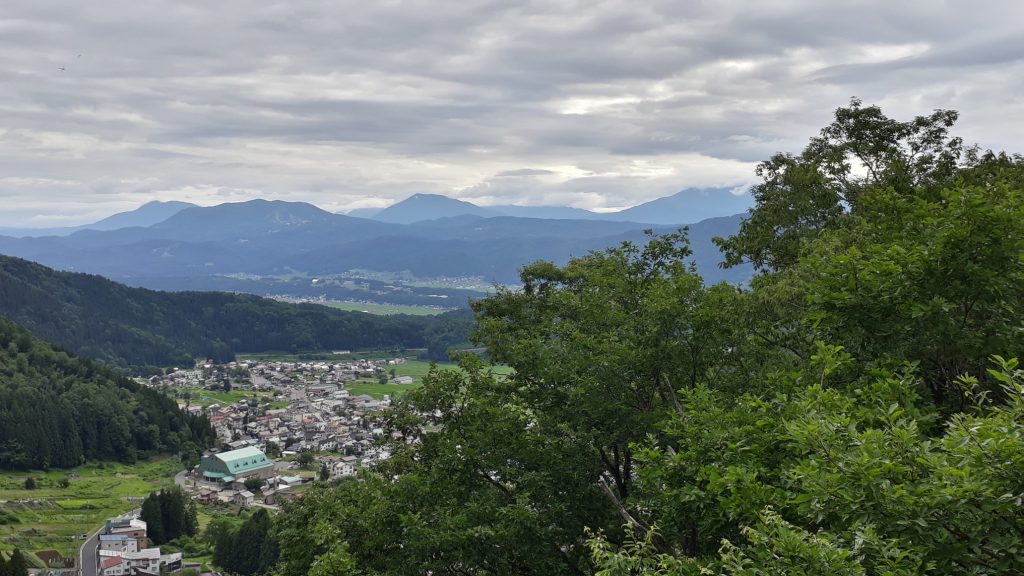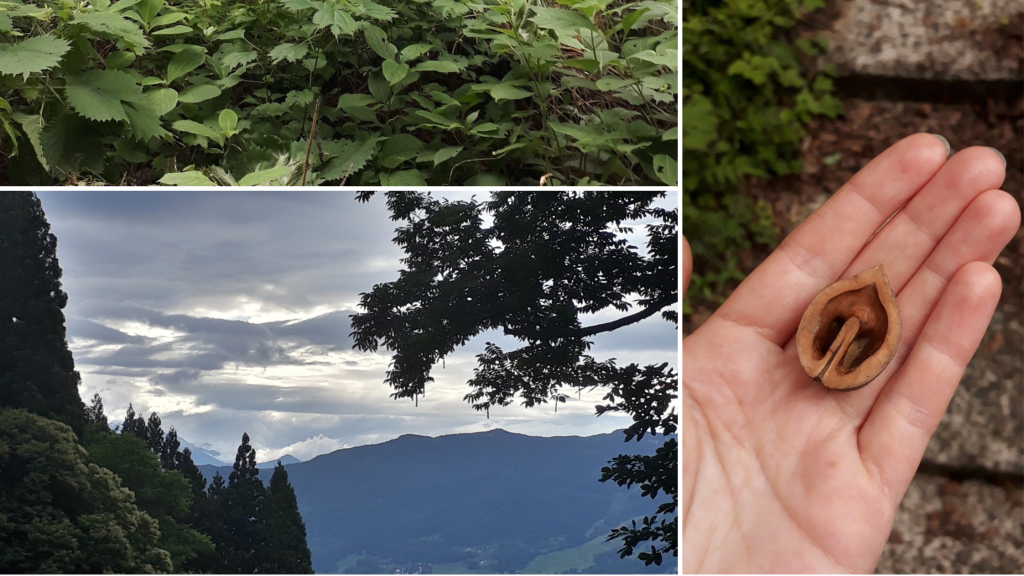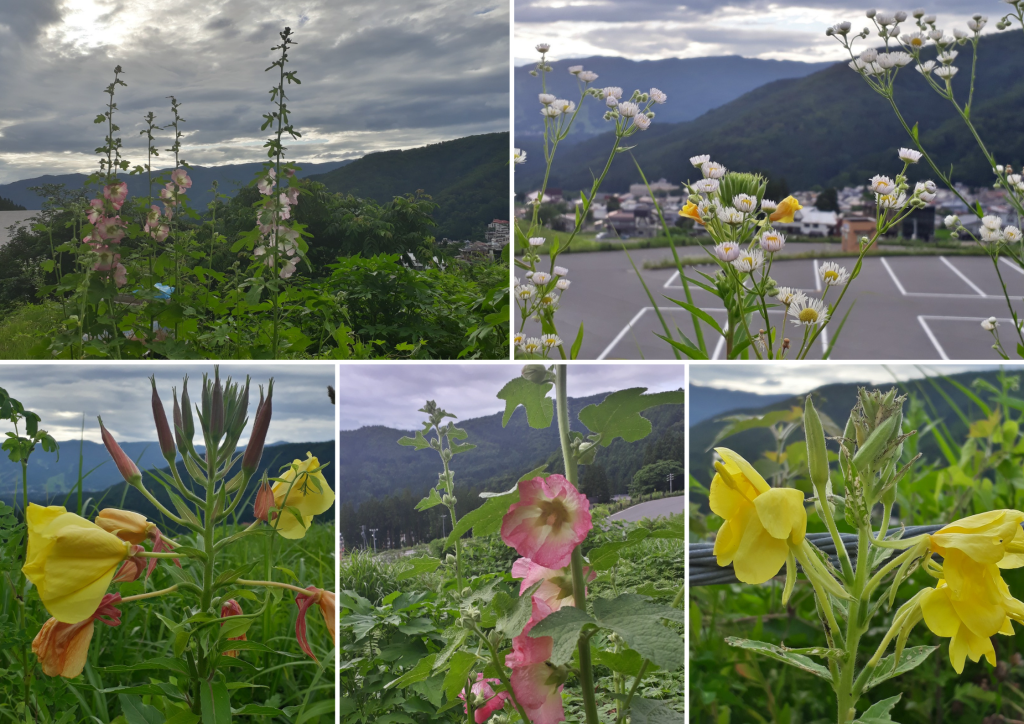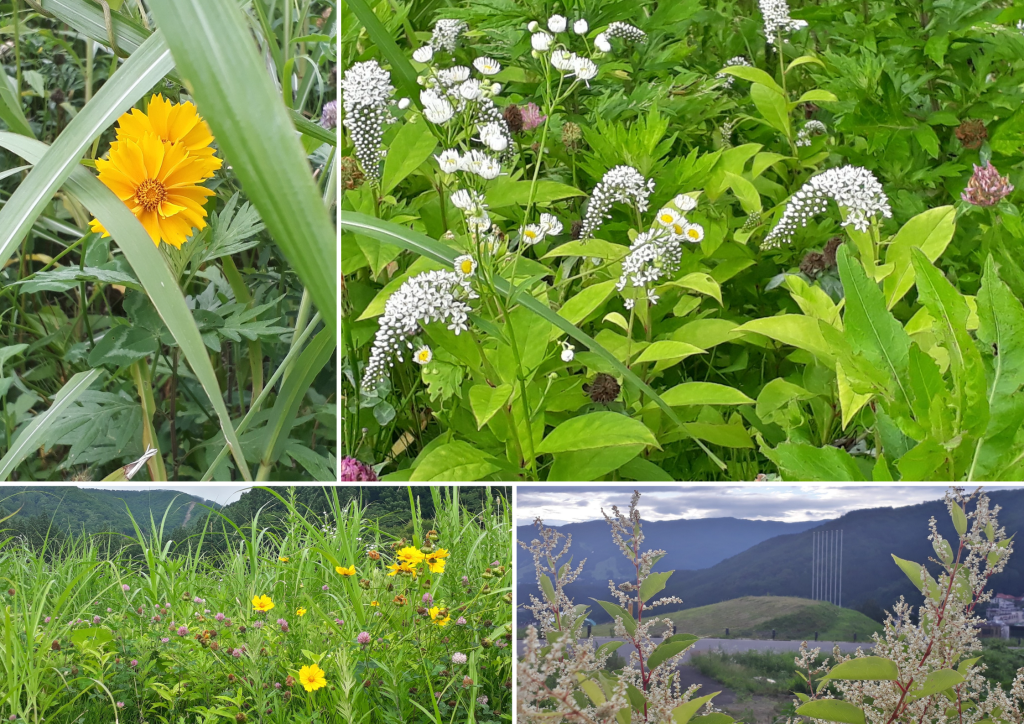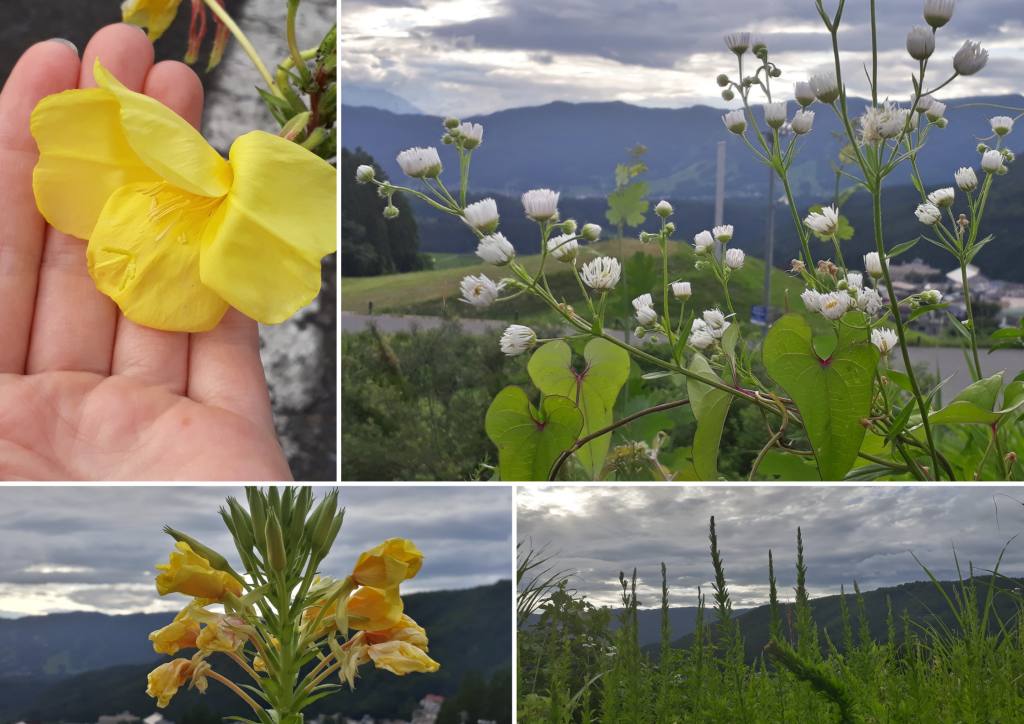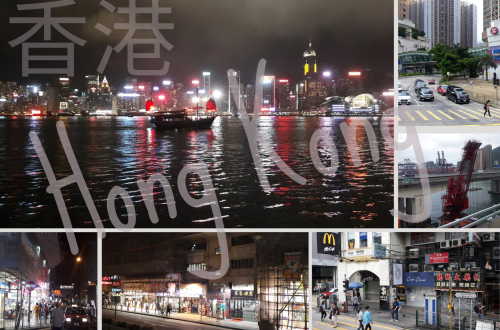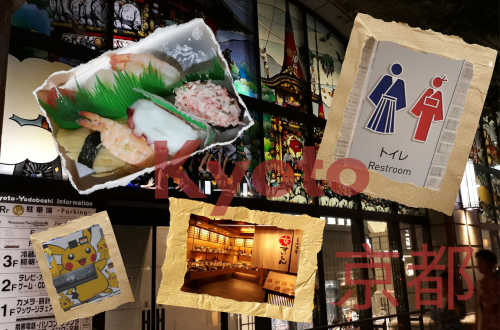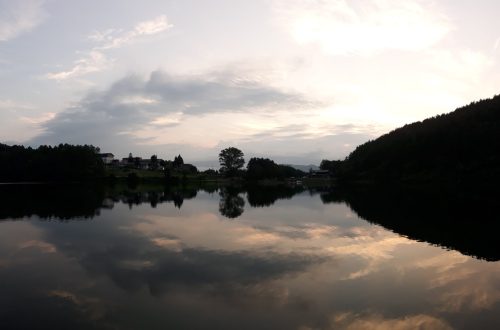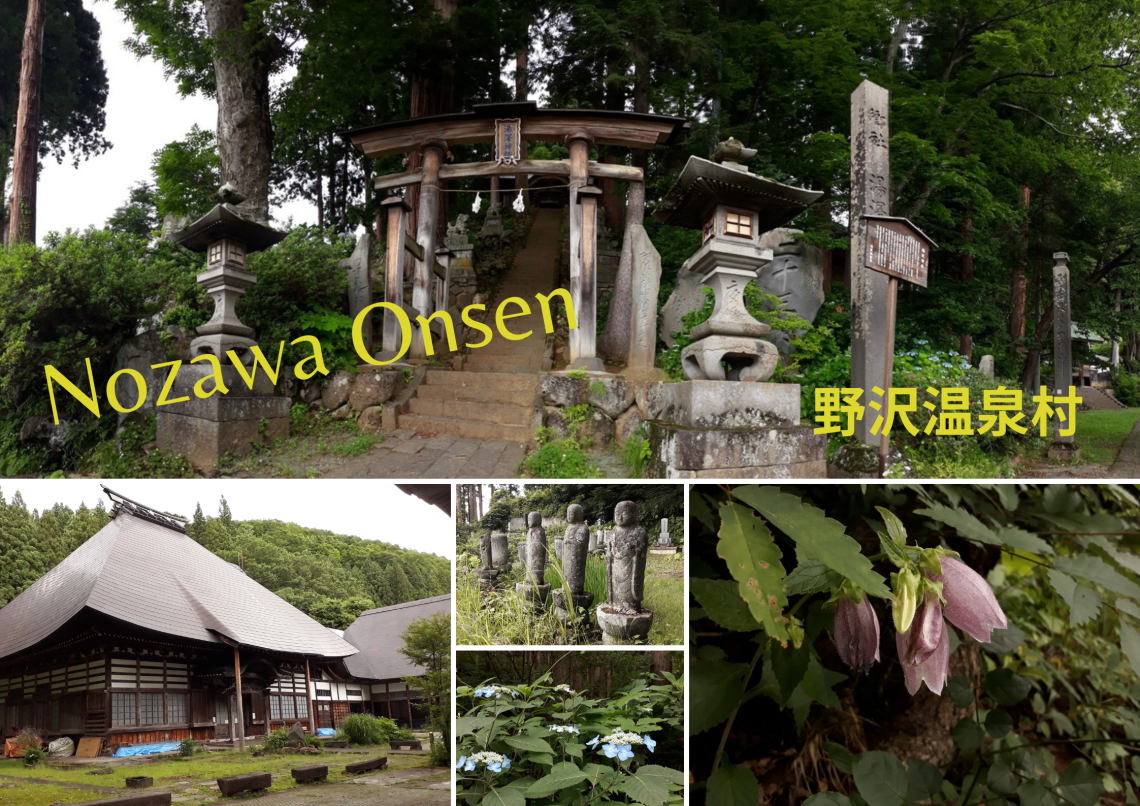
Treeleaf Diary entry 3.2: Japan, Nagano Prefecture, Nozawa Onsen Village
Discovering the fairy-tale village of Nozawa, with a few odd moments
Original post from July 7, 2019 (updated on June 4, 2023)
So much time has passed since I last wrote here. Not a word since October! Today, almost 4 years later from the original post (seriously?!), is already June, and full moon (in Sagittarius, for those interested) at that, I have Debussy's Claire de Lune playing on the background on repeat, and it is time to finalize this chapter. What follows is already from 2019, with a few edits.
I checked in the meantime what I had written in my journal I had with me on my trip. I did tend to put down my thoughts in writing at times, and it was especially good to do that on a train which was much smoother than buses. What I had written on the way to Nozawa brought back a rather bizarre scene I had witnessed on the Iiyama train. Namely, on the other side of the train, across the aisle, there sat an older man who held in his hands a larger framed photograph of a woman, about the size of A4 (photo, not the woman). And he didn't just hold it but seemed to show her everything that could be seen from the train windows on our journey. He turned the photo this way and that, even towards the other side of the train where I was sitting, as if to show her every last bit possible? The frame was white, a mourning colour in Japan. I found myself wondering if it was his late wife and there were maybe some unfulfilled promises... Or was it related to the local religion, shintoism? I sadly forgot to ask from the locals later what could be the significance of this event, do Japanese have a custom to take a passed on family member on a final journey, in the form of a photograph, to show them places they used to know and can no longer go to for the last time? Or had it specifically to do with this man's family tradition or maybe his promises? Perhaps it doesn't even matter, it was simply a sweet gesture. Or could be I completely misunderstood but that was the impression I got. Maybe he had promised to take his wife somewhere but there wasn't enough time and now this was the only way he could fulfill his promise... Who knows. (Suddenly, I can smell strawberries. Could get some from the market... but it's already closed)
It was around 20 minutes to Nozawa by car. The views were breathtaking, lovely villages, rivers and lakes, arch bridges of multiple colours, and of course mountains everywhere again. It was rare that you were able to see flat ground anywhere in Japan. Nagano prefecture especially is rather mountainous, a perfect location for the Winter Olympics.
By that time I was already completely exhausted. The last few nights of little sleep (perhaps 2-3 hours on the bus) were starting to hit me hard. Nathan, the supervisor of our volunteer work and the summer manager of the ski villa took a quick introductory tour around the village with the car, after which we arrived at the villa. From the outside, the building looked rather simple - a modern, functional Japanese-style four-storey guesthouse that rented skis and snowboards in the winter. The interior was customarily minimal as well, but with a warm atmosphere: there was a bar made from heavy varnished wood near the entrance, spacious foyer, dining room with a floor of tatami--mats, and of course a large Japanese restaurant-style kitchen where five or more people could comfortably cook side-by-side. Everthing smelled of freshly cut wood, so good!
Room
I was given a room on the last, fourth floor (there was actually a 5th one as well but it was more like an attic, used for accommodation and storage). Because there were very few guests in the summer, if at all, us volunteers got to stay in our own separate rooms. I was the only one on my arrival but a few more were about to arrive in the coming days. When I stepped into my room, I couldn't help but smile - one of my dreams had been staying in a Japanese style room and it had just come true! The famous Japanese rice-paper sliding doors that lead to a small balcony, a floor covered with tatami-mats, wooden beams and details, and a sleeping mat on the floor (futon). A simple closet for clothes and necessities, and a few hooks on the wall. A chair and a small table. That's it. Minimalistic. And I wasn't just passing through - this was going to be my home for the next 3 weeks!
Tatami-mats and futon are integral parts of a Japanese interior. Tatami is weaved from a grass called soft rush (藺草, igusa in Japanese, https://en.wikipedia.org/wiki/Juncus_effusus), the edges are covered with fabric. Freshly made, the mats are green that later turns into yellowish colour like straw in general. Futon is a mat-like mattress that is laid on top of tatami and is used for sleeping. At first, I used a special bed frame underneath my futonbut ended up putting the mattress straight on the floor after a few days. Much more comfortable.
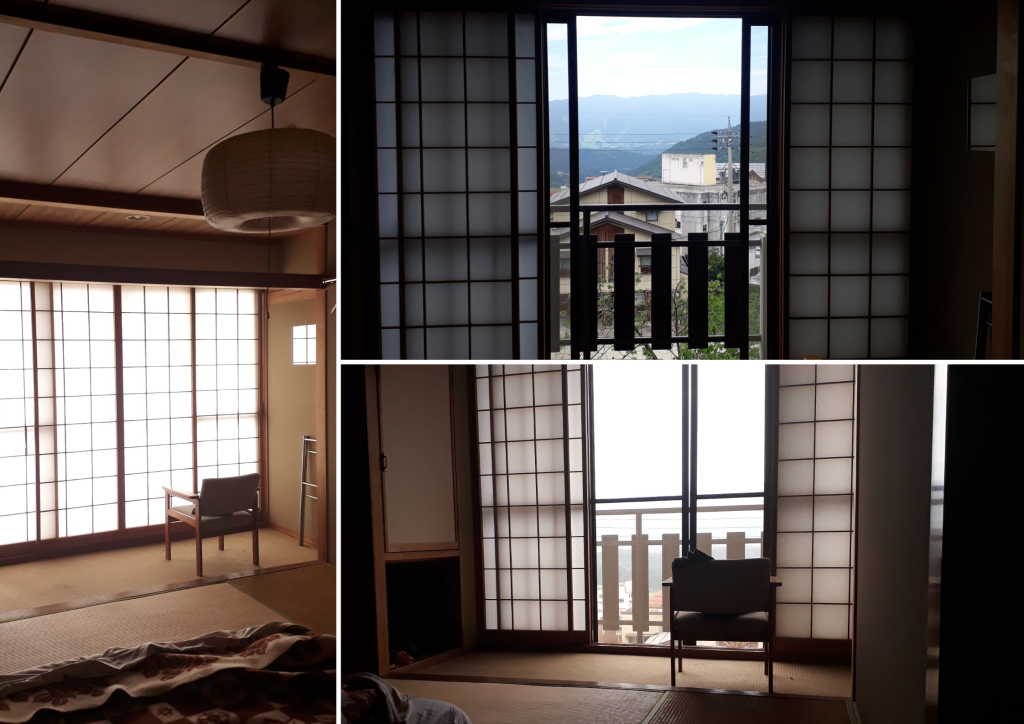
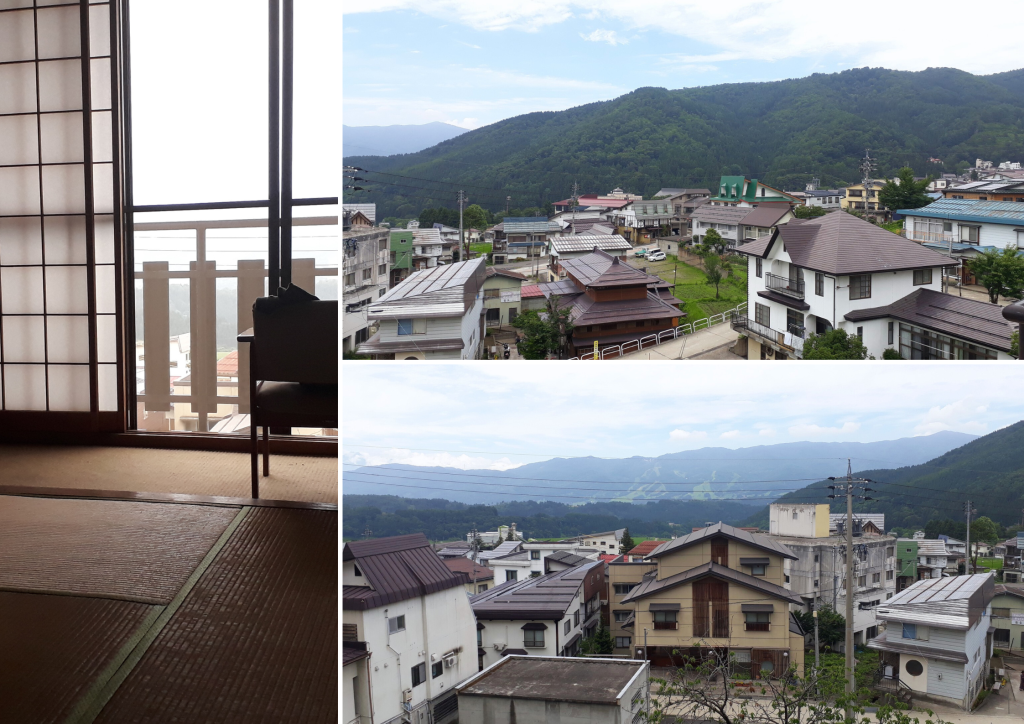
I was over the moon! Seeing the view from my windows only added bonus points - if by now I am quite used to mountains (there was just no escape from them) then in the beginning, coming from a very flat Estonia, it was brand new to me. My eyes rest on mountains to this day, whenever I see them, there's just no longer this first-timer's fascination. You could see basically the whole village from the balcony, only parts being hidden on the other side of the building. As far as the eye could see, there were mountains everywhere, covered with trees and mountaintops brushing the clouds or even disappearing into the white fluff. I could hear the loud sound of water flowing somewhere, so calming. I found out later that water is flowing in the village basically everywhere in the village but about this later). I had written in my journal at that time that the small streets of Nozawa reminded me of the narrow and curved roads of medieval European small towns, up in the hills somewhere, but I guess life in mountainous regions are similar no matter where you are in the world. Only the houses are different than in Europe, or even Osaka. Much different. They are much more traditional, but that does not necessarily mean old. Roofs are made to stand the weight of snow as there's a lot of it in the winter. The number of inhabitants in 2019 according to Wikipedia was 3653 people. And it is still considered a village, although I remember locals calling it a small town. The whole place is between 300 - 600 meters above sea level, the highest mountain point is 1650 m, Kenashi mountain. To the West of the village there is the river of Chikuma (known also as Shinano river in the lower areas), which happens to be the longest and widest river in Japan!
On my arrival day, however, my discovering of the place was cut short. The exhaustion finally took over around 2 in the afternoon, and when I woke up it was the next day's morning, 4 am.
The twitter of swallows. Just like in Estonia! The whole room smelling of wood. After breakfast I simply couldn't, nor wanted to, fall back asleep, despite still being tired and dizzy. How could I sleep in Japan! The whole village stood unexplored, waiting, and surely there was a temple there somewhere! A real one, just like on photos. I had the first day to myself, so yeah, out the door I flew.
The village of Nozawa
A charming village with narrow streets, houses like on a postcard with lots of flowers and well-maintained gardens. There were also plenty of small shops for souvenirs and local produce, although only a few of them were open in the summer. The people were of small stature and peaceful, looking at me curiously as if I was an alien - which I sort of was there. They weren't too used to seeing foreigners in the summer, with winter being the main season for all sorts of travellers coming to Nozawa to ski.
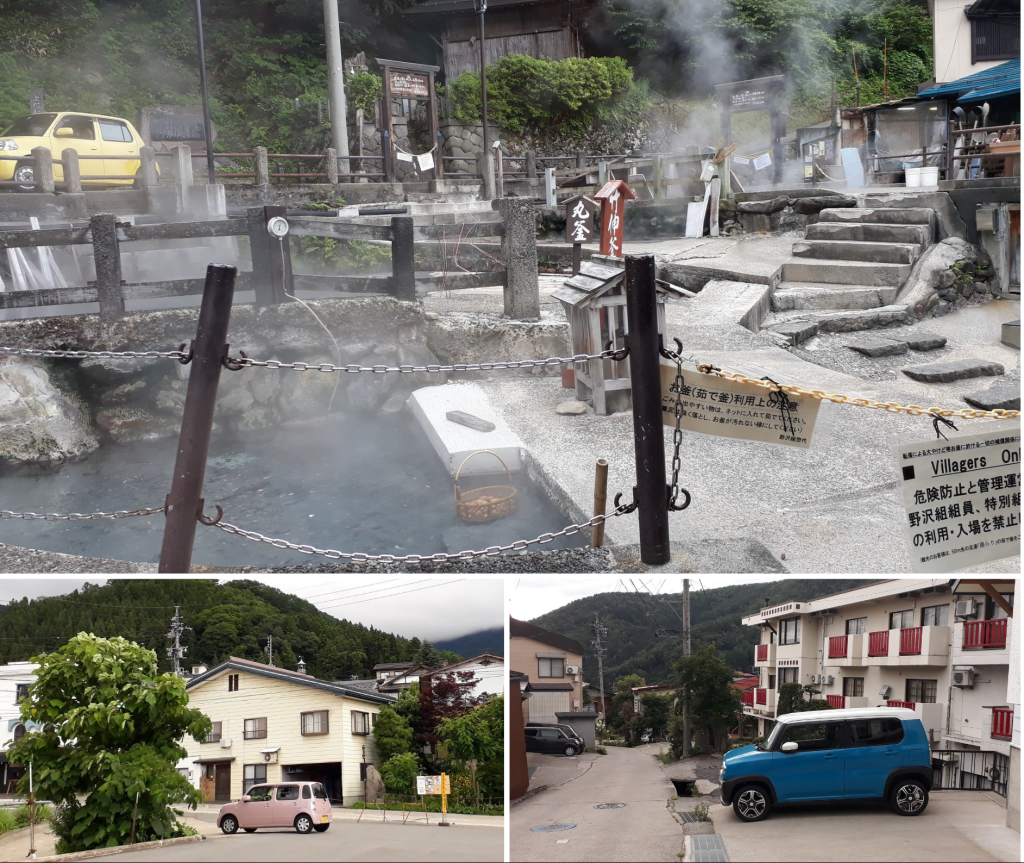
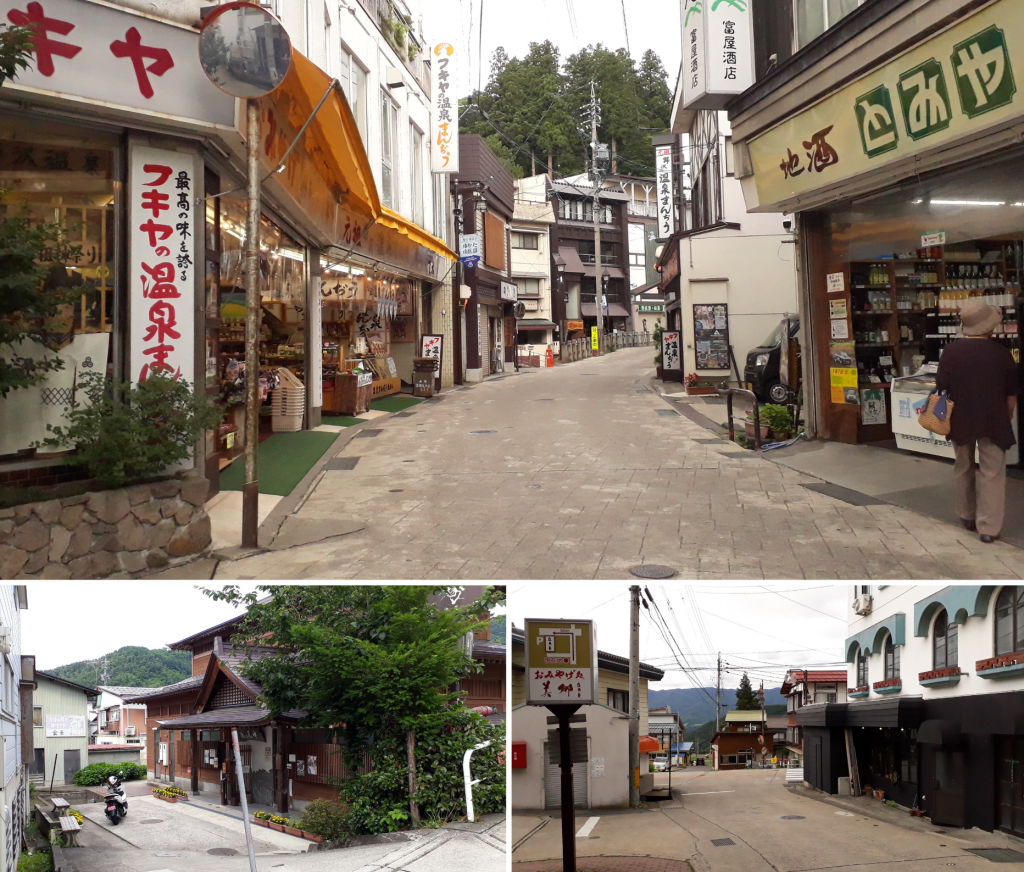
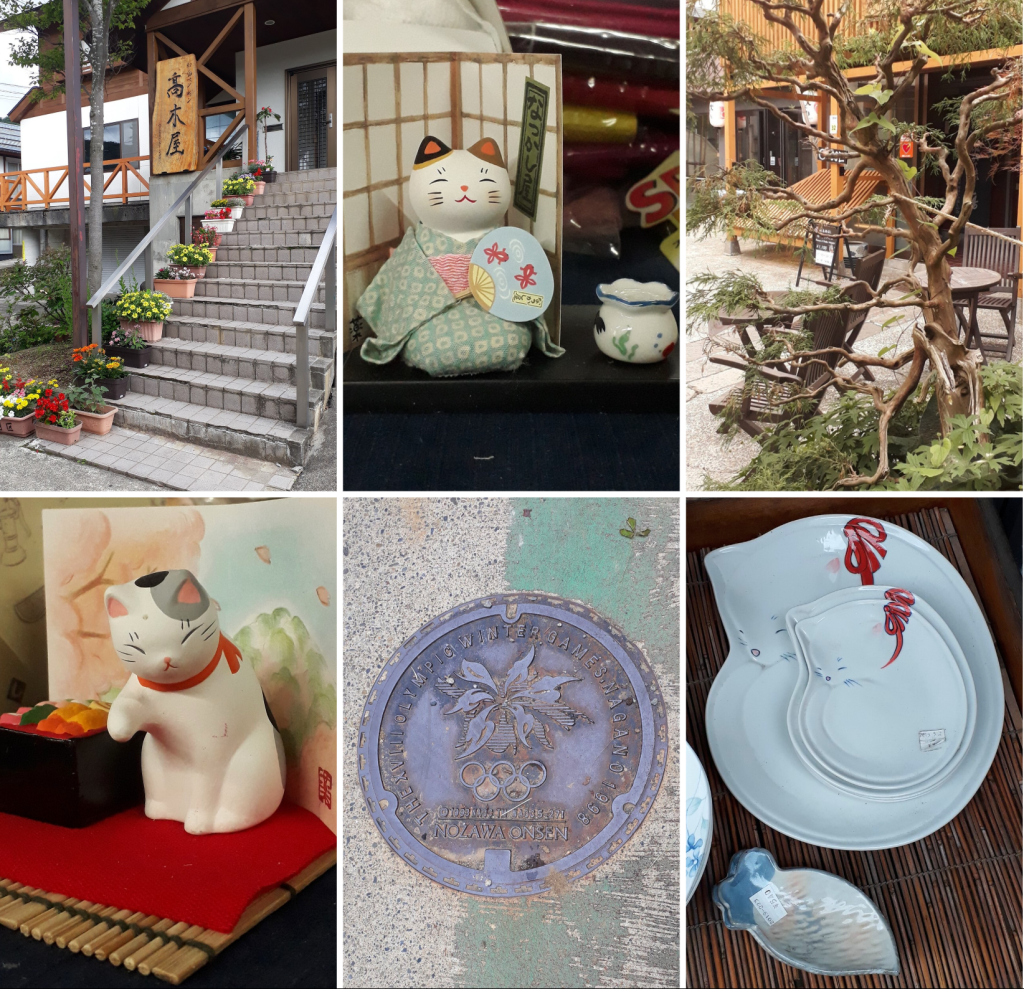
Discovering the surroundings - including my first encounter with a genuine Japanese temple!
As my main walking direction, I set a temple I found on Google Maps. The right location wasn't difficult to find, it was quite close, situated right at the edge of the village. Years back I had taken Japanese Art subject at my university; it wasn't in any way connected to my English major but already then I was drawn by everything Japanese. Can't say I remember much from what we talked about in class, mostly the torii gate which now stared right at me above the stairs leading to the temple grounds. It was made of old, unpainted wood, tall and powerful. And sacred. I've always felt a lot of respect and reverence for holy places; of course, until that moment I had only had the opportunity to visit churches. It is the same thing with Japanese shrines - there's always a feeling that someone is looking at you from above a cloud somewhere, watching your every step. Only a short while before originally writing this chapter (in 2019) in a Taiwanese hostel I was staying at, I had seen a documentary about Japanese beliefs and religion (they had a Japanese channel there on TV), where it was said that this is what the Japanese actually believe and therefore always act very respectfully and considerately in and around temples and shrines.
Gods and various nature spirits are everywhere and although the Japanese are not religious as per our understanding, shintoism is in their blood - which is quite similar to the nature religion of old Estonia. In that specific documentary they talked about littering and throwing trash on the ground. It is considered as defiling and spoiling the home of the nature spirit, at which those spirits may get upset and choose to discipline or punish you. But even without the fear of punishment it is, at least for me, unacceptable to throw rubbish on the ground, especially in a sacred place...
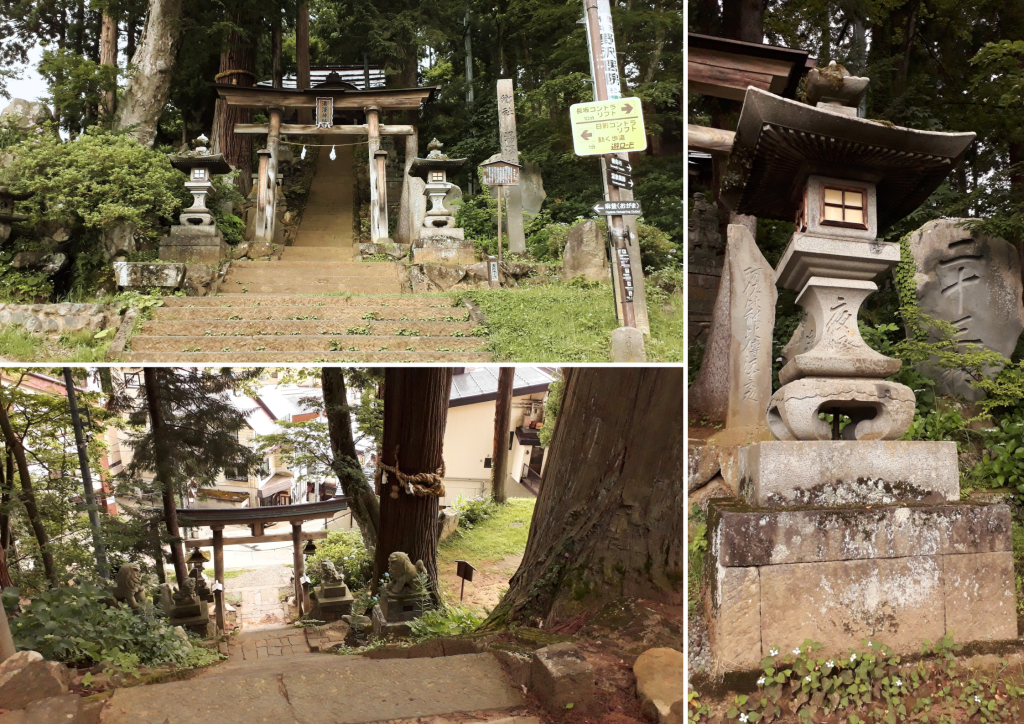
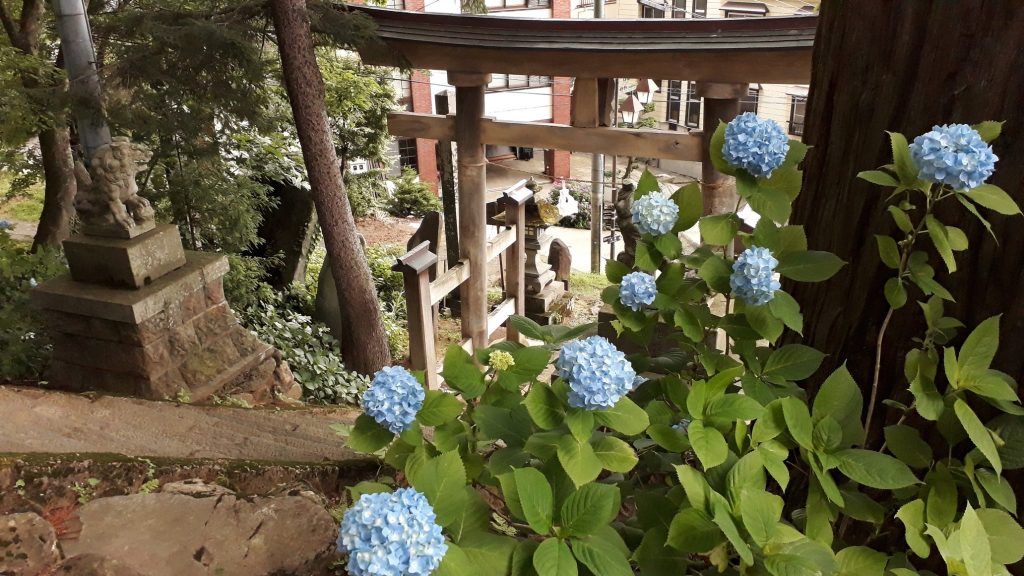
The temple, in front of which I found myself, seemed quite old, with beautiful wooden carvings. Dragons. The temple looked more grand than I had imagined, not so much because of its size but the essence. Old and sacred. Usually there isn't just one building but a whole complex. There were also a few large copper temple bells. So far I had seen these only in movies, mostly Chinese. I was wondering around there for a long while, completely fascinated, without meeting another soul. I touched the old wood, smooth and warm. Tall, beautiful trees were growing all around that also seemed ancient. The orange tinted bark was peeling off in places ("reddish-brown exfoliating bark" in botanical terms). Later I found out that those trees were called Japanese (red?) cedar (Cryptomeria japonica). They very often grow around shrines and holy places but for now full forests have been planted of those trees and they can only be cut with special permits which are very expensive. A treasured tree.
In Japan, Shintoism and Buddhism have become intertwined, so it happens often that a Buddhist temple and Shinto shrine can be found in close proximity to one another; usually separate buildings but it's not always so easily distinguishable, especially for a foreigner, which is which.

Looking at the map now years later, trying to find the name of the temple, I see three temples/shrines there very close to each other - Yuzawa shrine (Shinto) and Kenmei-Ji temple (Buddhist), but there's also one called Onsenyakushido (looking at the images I don't think I even saw it), which looks very similar to the first one but is shown as a Buddhist temple. On the map they are marked accordingly, using a separate symbol for each.
As I didn't have a clue what to do at a Shinto shrine then perhaps I will describe a traditional visit later - if I still remember anything (there is a certain procedure). This time I was there just to see new things.
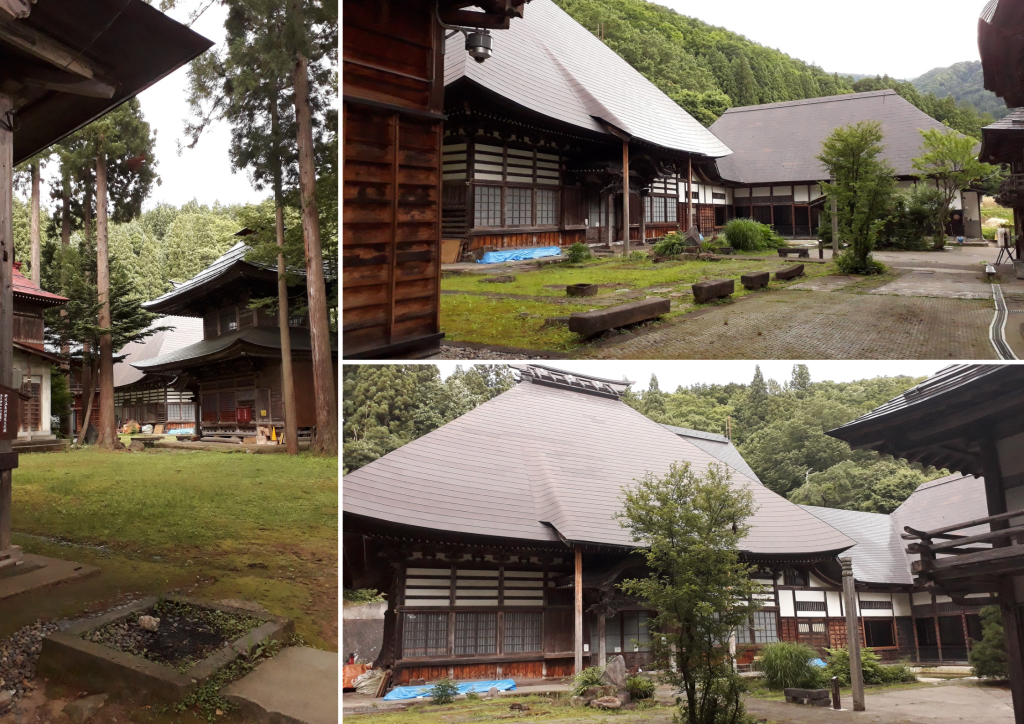
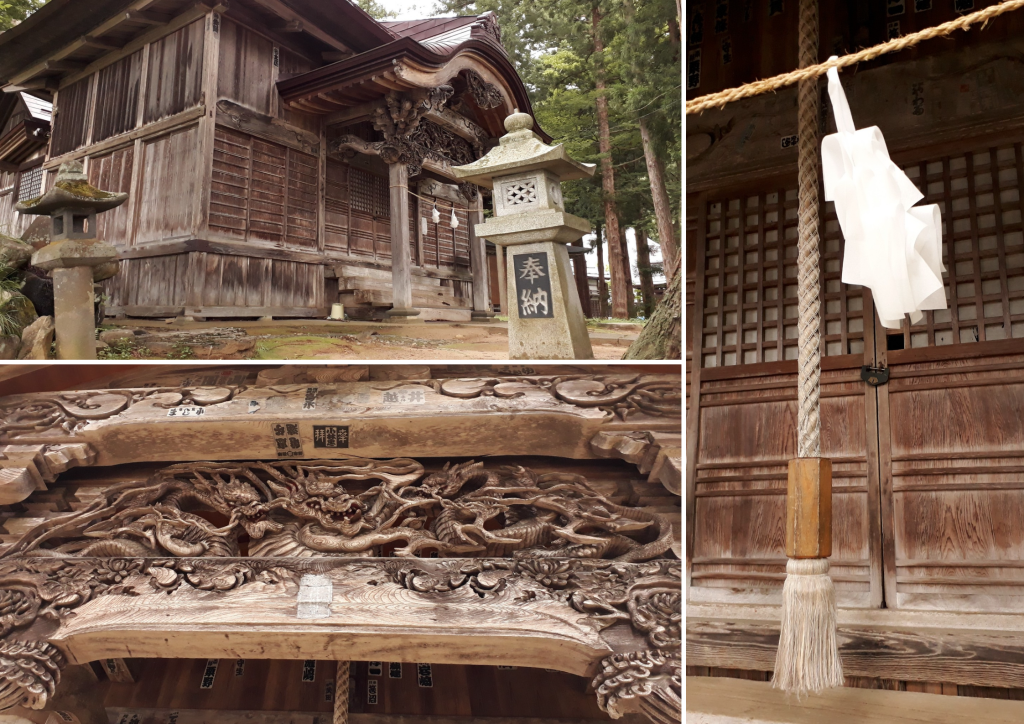
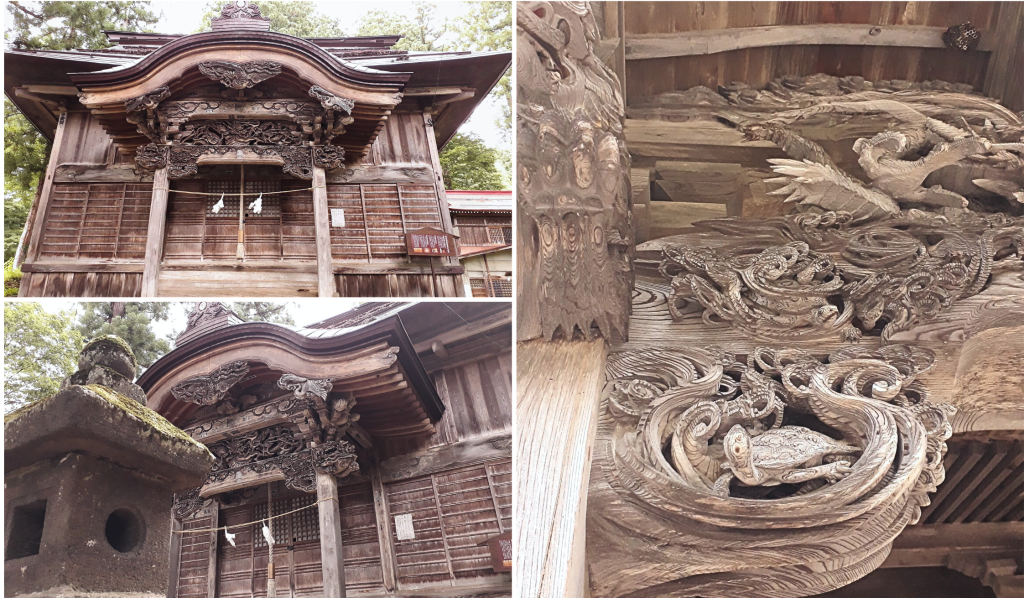
of the shrine's main building
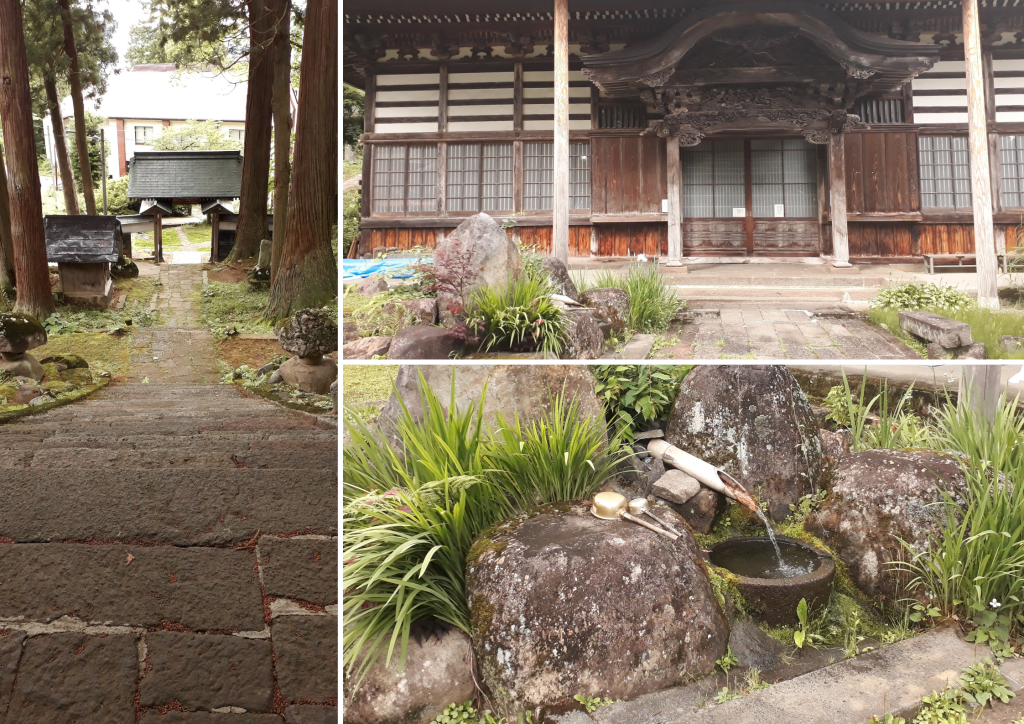
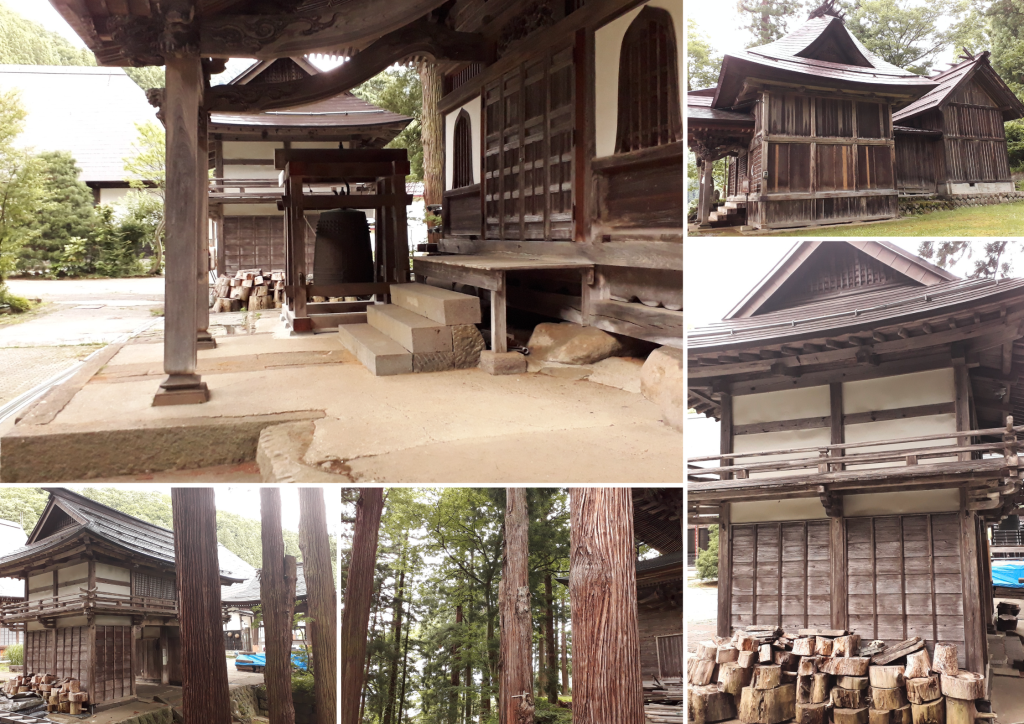
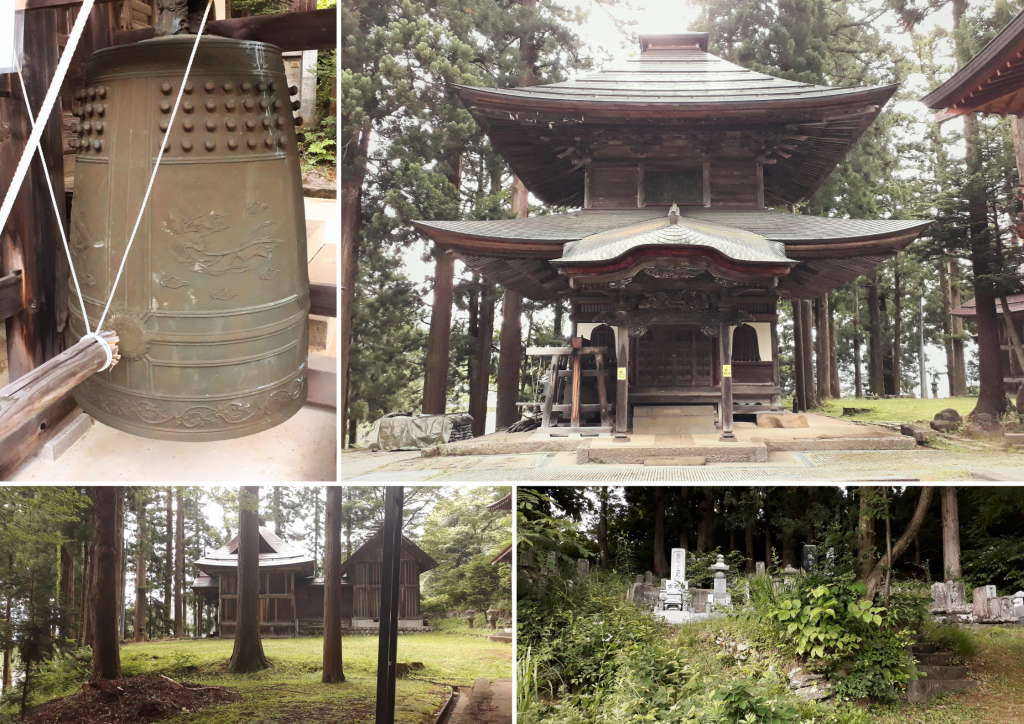
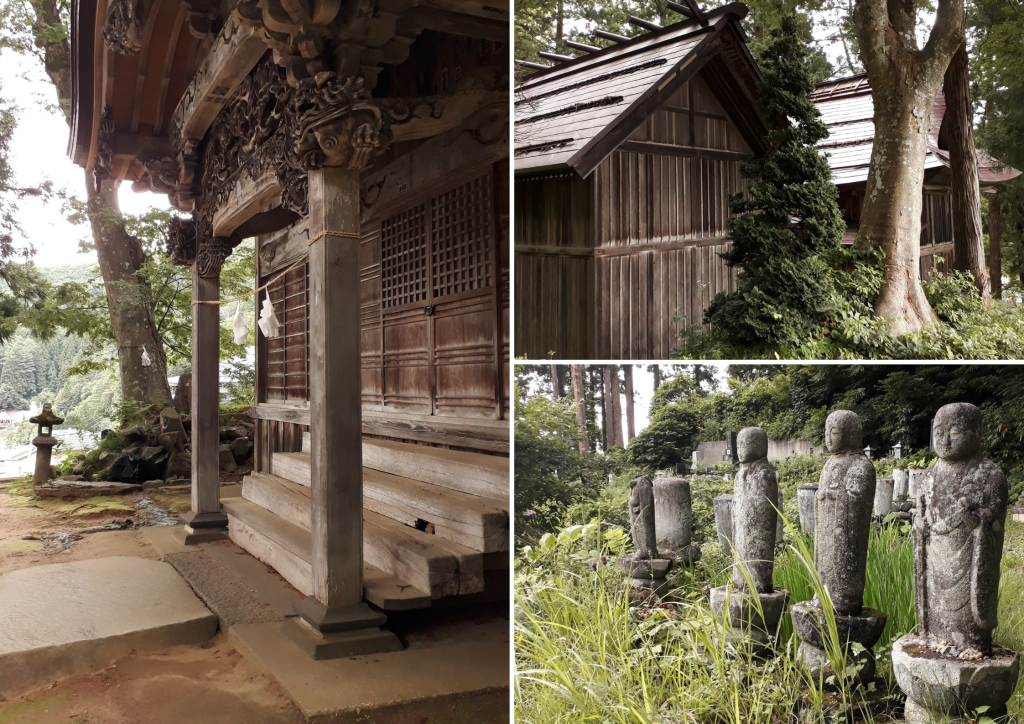
Cemeteries
There was a cemetery on the temple grounds as well. It was something completely different from our traditional burial sites, or anything I've ever seen even in a movie. Small plots on slopes, separate from each other. Monuments of different sizes that seemed also part altars; statues of deities or ancestors, places for burning incense and leaving offerings or gifts. On many of those "altars", I saw an unopened beverage can that I can only assume was brought to the deceased... Instead of flowers? I also noticed many pairs of skis, vertically stuck into the ground... It got me thinking, how many of those people had died in a skiing accident? Those slopes can be incredibly steep... How many accidents have happened here? How many have perished in the name of adrenaline? Even speed skiing was allowed in the Olympics at some point... Maybe the skis were just there as a memorabilia, to symbolize a loved hobby or a profession. Don't know. I didn't feel like asking about it either. But there were so many of those skis...
It felt really weird to be there. Not good or bad, just bizarre. It happened a lot in Japan.
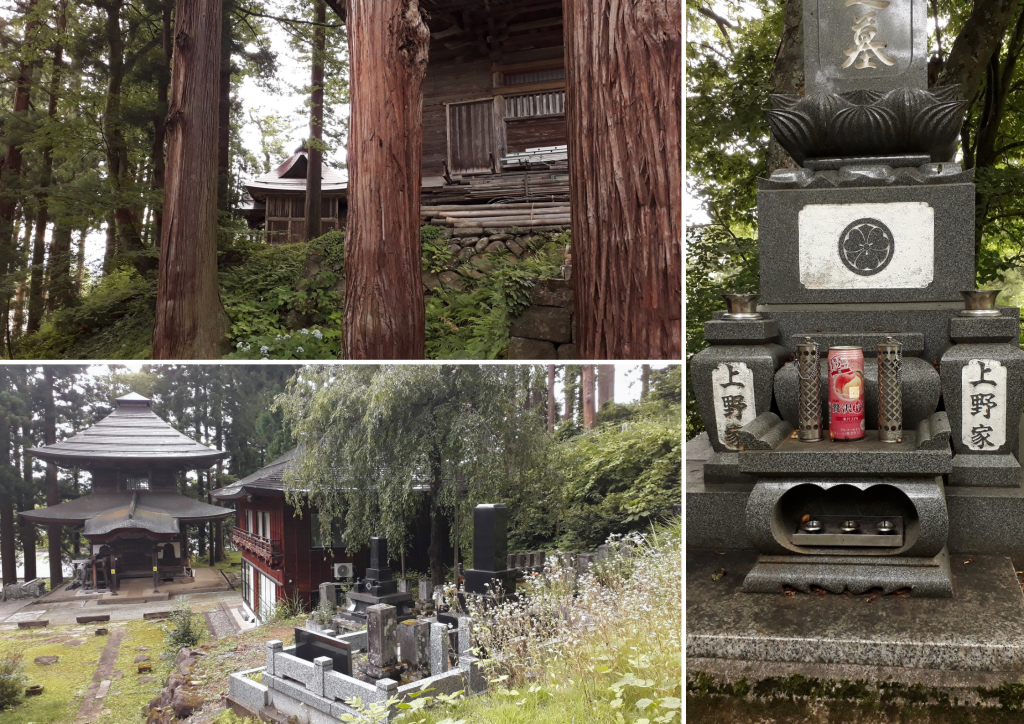
The mysteries continue
Near the cemetery that continued on smaller, more separate sites along the slopes, there was a big strange tube or pipe that went up the hill. Seeing that, my whole brain simply turned into a huge question mark - what on earth is THAT?!? So surreal. I walked around it for a while, taking photos, but I could not see inside. By this time, I was already imagining god knows what, that there's a train going inside it or it's some sinister invention from a James Bond movie (that graveyard really did make me feel weird which could not be brushed off easily, I can feel it even now writing this). There was a building some distance away, I finally saw, that the tube passed through, and the door of that building was open. There are no words to express how curious I had become by then, so I simply HAD to find out what it was. Nothing could have stopped me from climbing up the stairs next to the tube, to peek in from the door. I had to know! And... Came out it was just and escalator... Straight up the mountainside, to where the ski base was. And a museum. In the small building where I was at, though, there was nobody there. Just an empty desk. Nevertheless, this was the longest escalator I had ever seen. Very narrow as well, but Japanese people don't take up much room. I took a few photos with my phone and legged it before whoever sat at the desk came back, maybe they're going to ask for some ticket and I didn't carry a penny on me! Right now I'm thinking, what a silly fear! I'm again reminded of my childhood, of the time when I was at our family garden plot (those little land patches for people living in apartments), eating my own strawberries and green peas, and some local lady from the village yelled at me and chased me away because she thought I was stealing!... It always felt weird to go back after that incident, I constantly had to look around to see if someone was going to come and tell me off again - didn't matter I was on my own land... In the Soviet times, any adult could tell any child whatever they wanted, especially when there was nobody to do anything about it. There was no "I know my rights" from the child perspective. No arguing with the adult. We didn't even dare! Kind of funny to realise what we still carry within us, every day. Some burdens can get heavy...
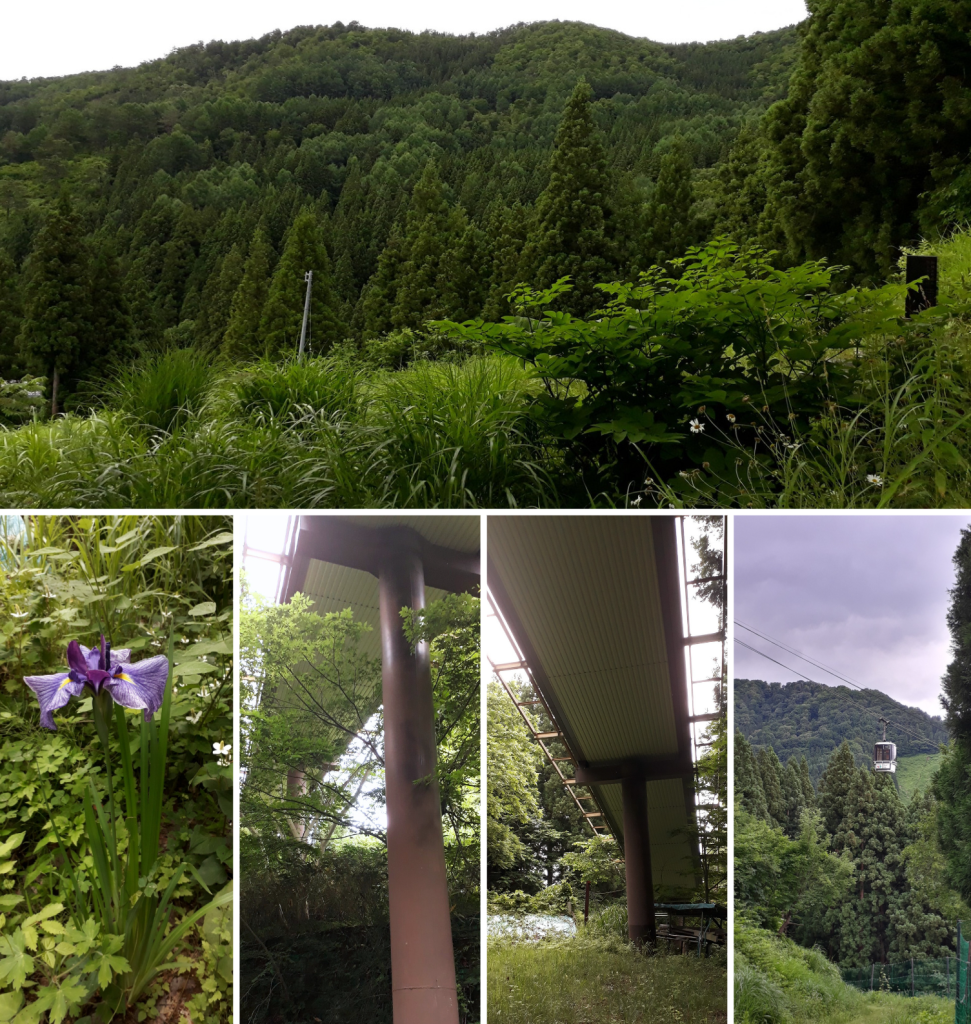
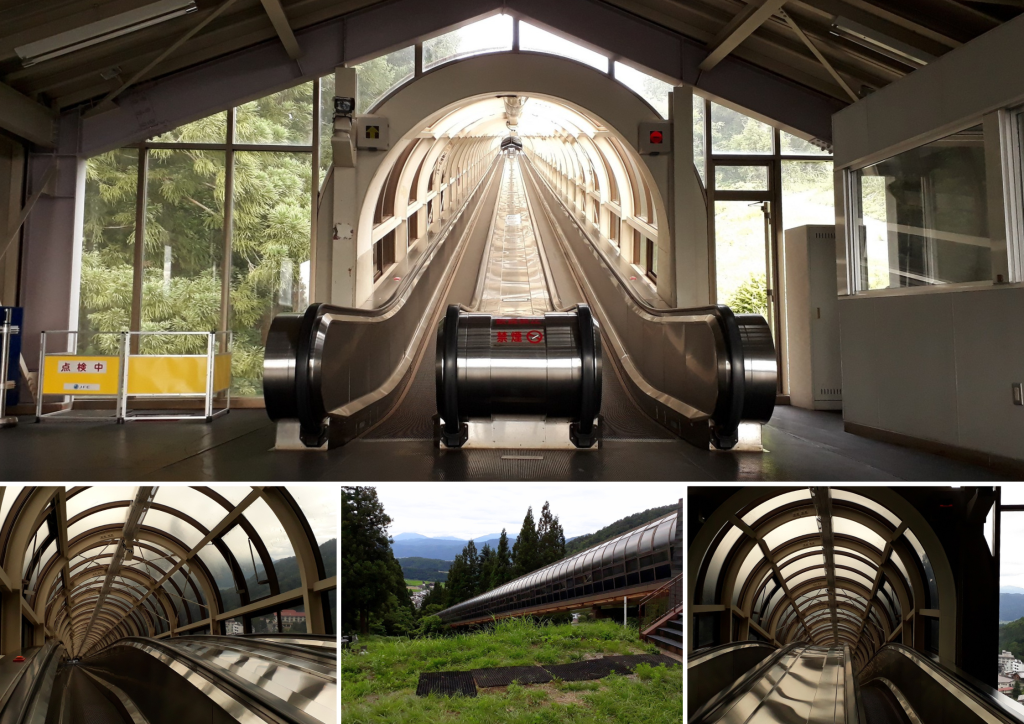
I managed to escape at the right time, I saw through the windows an orange uniform-clad man coming down. There were no steps on the escalator, just a moving walkway, but it went pretty fast.
Of course, I could have taken the escalator all the way up, now that I wasn't worried to be kidnapped by some crazy scientist with dreams of world dominion, but no - to push forward on foot in sticky heat was more my style. Despite it being cloudy all day, the weather was indeed hot and the path up steep. I was wearing only beach sandals, so had to look carefully where I put my foot down, especially in more overgrown parts. I was reaching the forest now, with those beautiful red cedar trees everywhere. I saw the ski base also where even then people were coming down the slope on some artificial surface. On the way, there was another tiny shrine which seemed to be in a location where people don't normally walk. Perhaps for hikers? Or a winter one, for skiers. In any case, I found it in a slightly messy state, one of the porcelain dogs on the altra had lost a leg, I tried to put it back somehow. Also the bottles there had fallen over. I put everything back as well as I could and continued on my way. Perhaps the gods were happy! It seemed nobody had been there for a while.
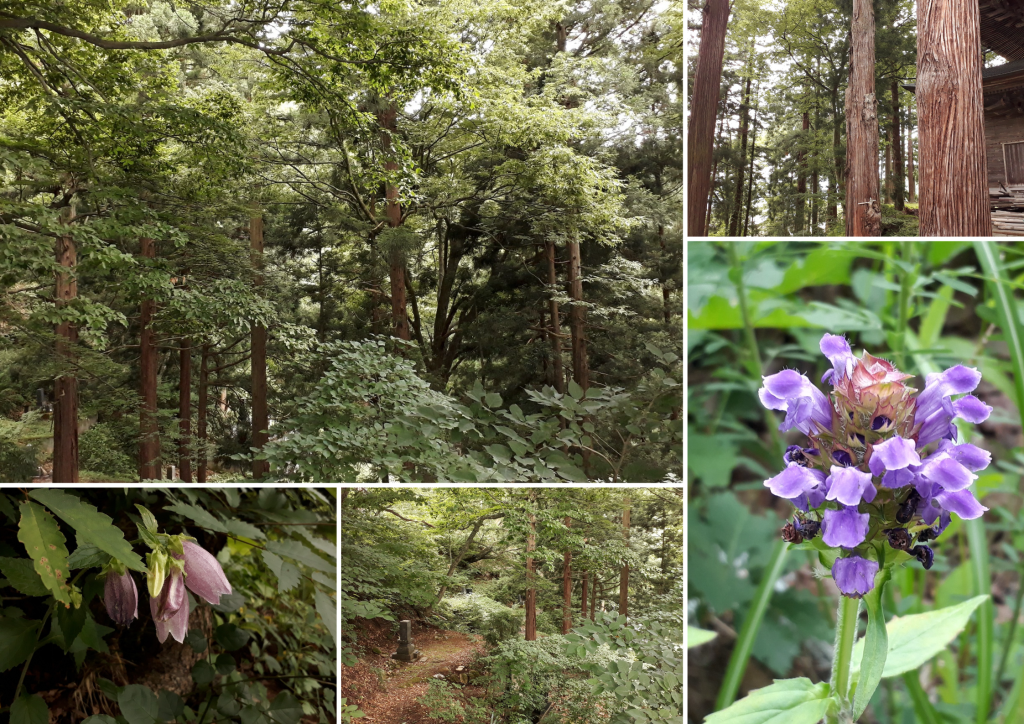
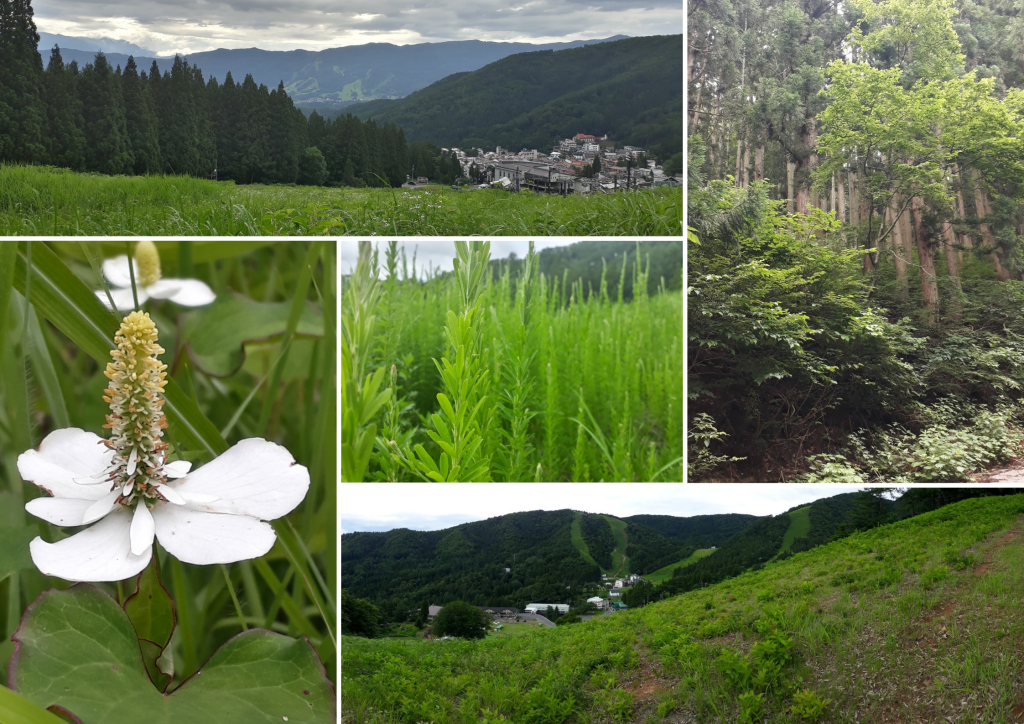
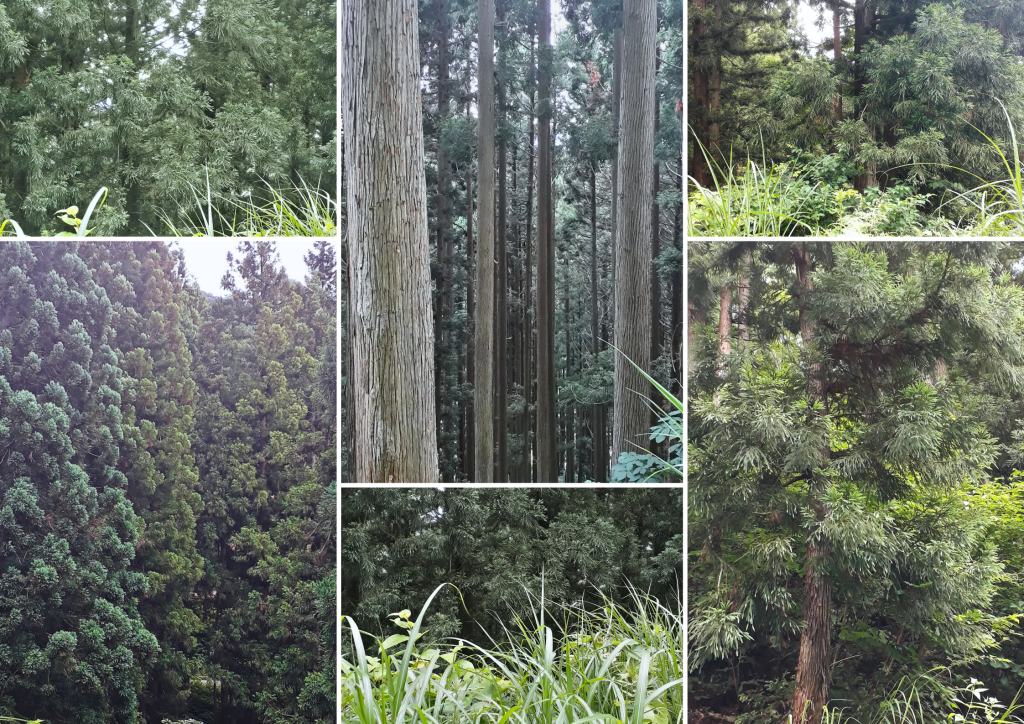
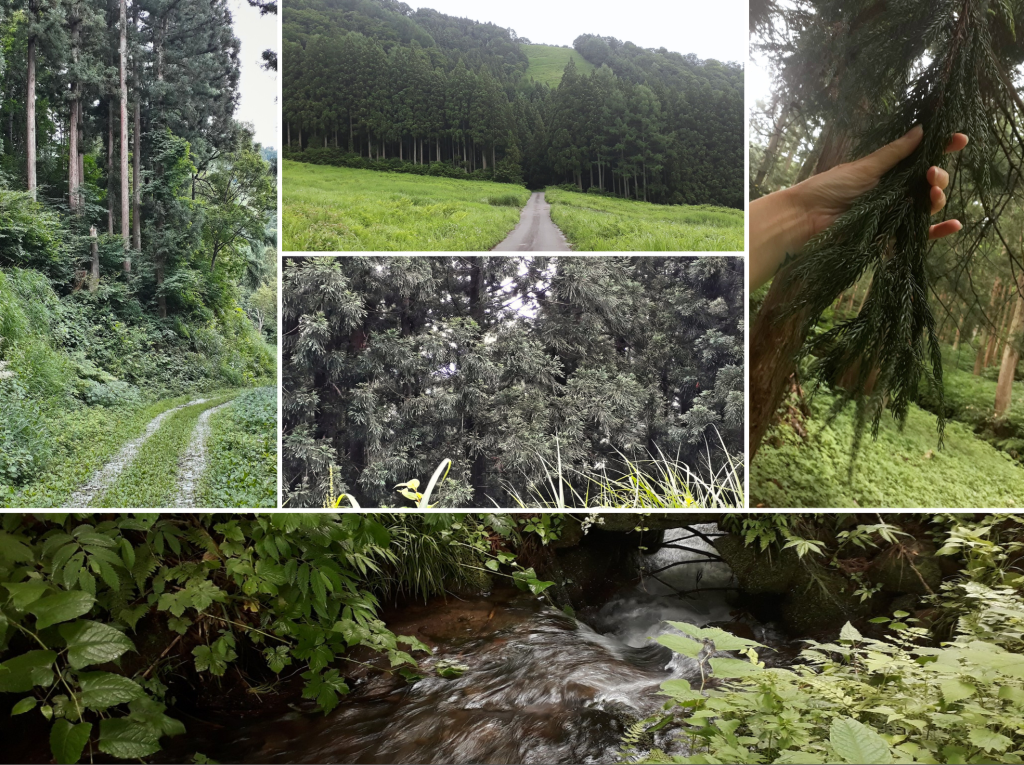
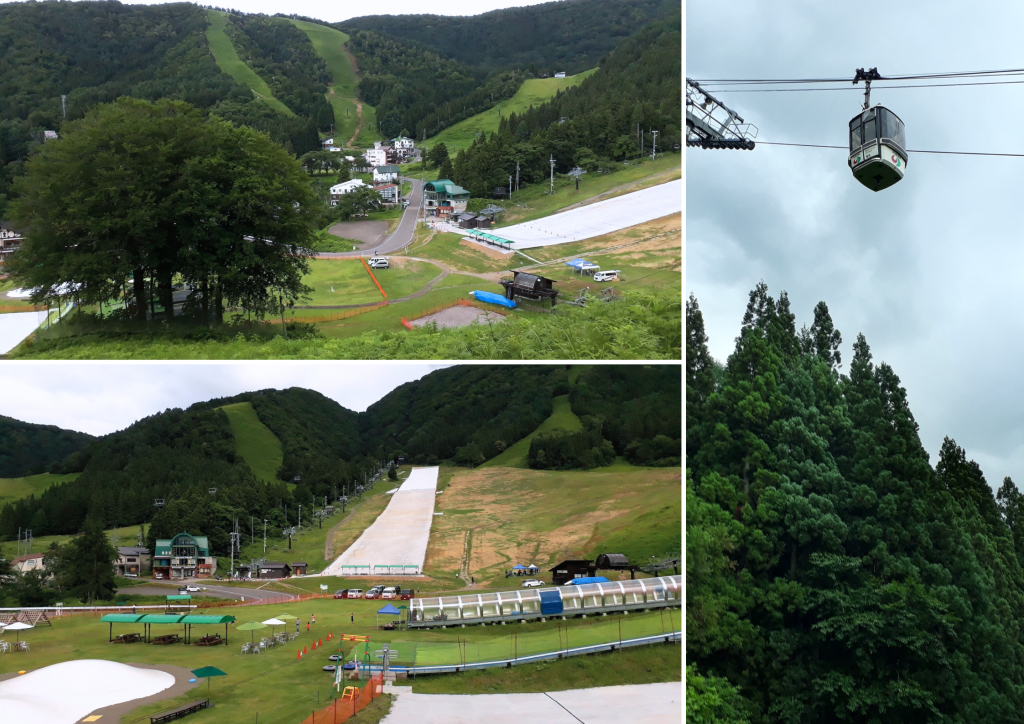
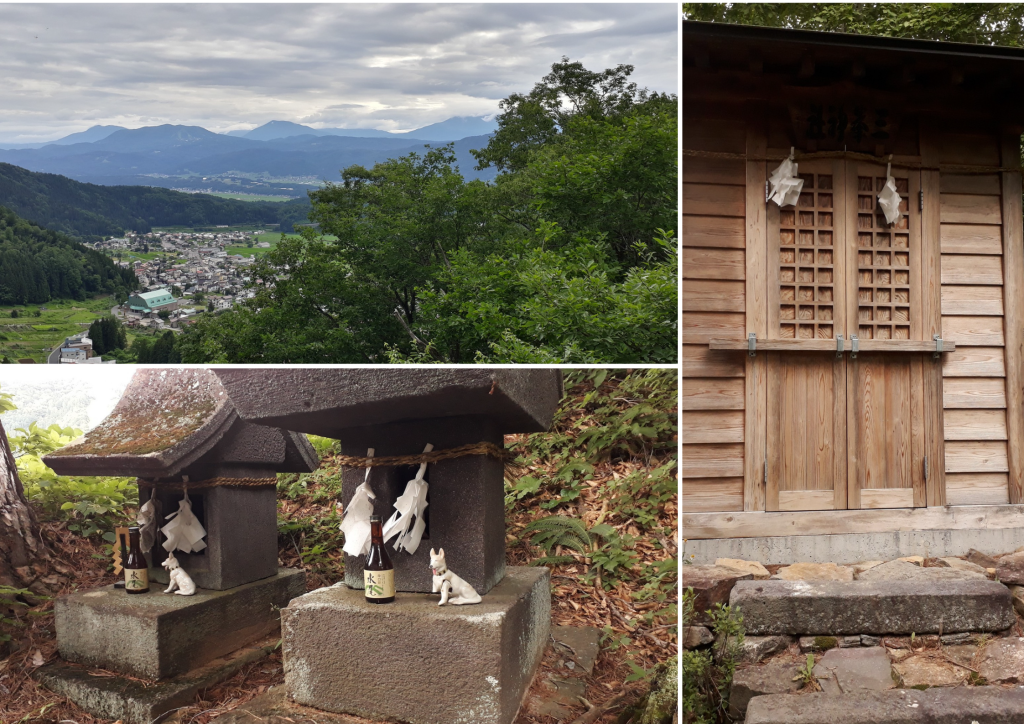
On my way home I came across yet another shrine whose location I cannot find anymore even on the map. I had no idea even where I was then. Same kind of old, unpainted wood. I saw many residential buildings, all so pretty, and different! Everything was so green, trees and flowers and bushes. Next to the shrine there was someone's little vegetable garden where ski poles were used to support plants :) It amused me a lot :) But why not use what you have plenty of and is just a waste otherwise. I guess you can pick up hundreds of those sticks after winter.
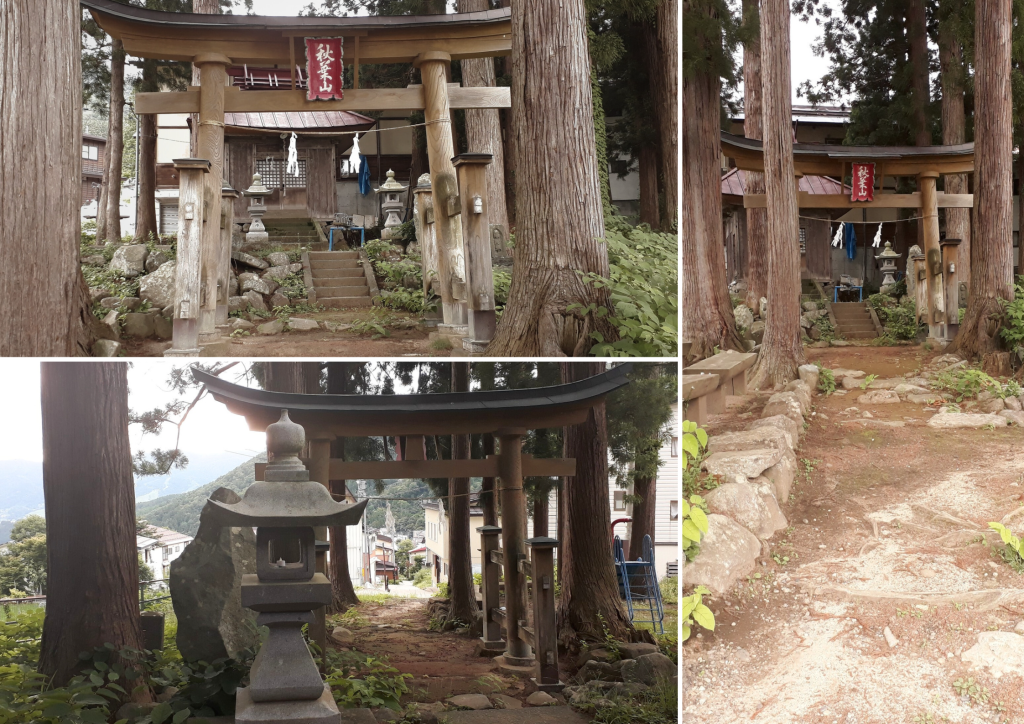
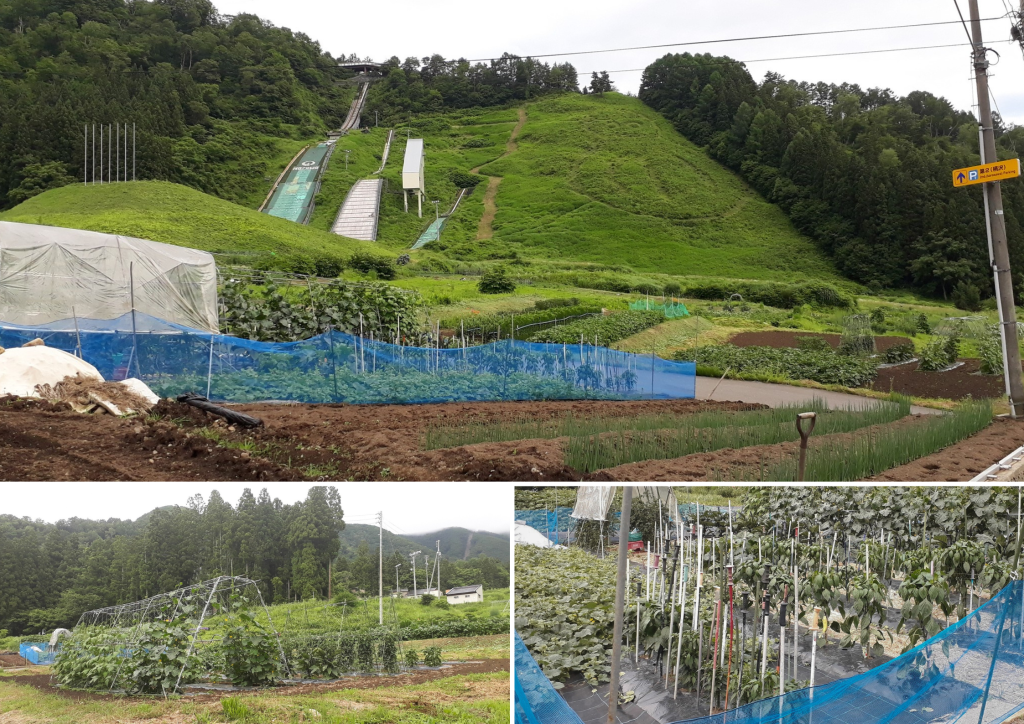
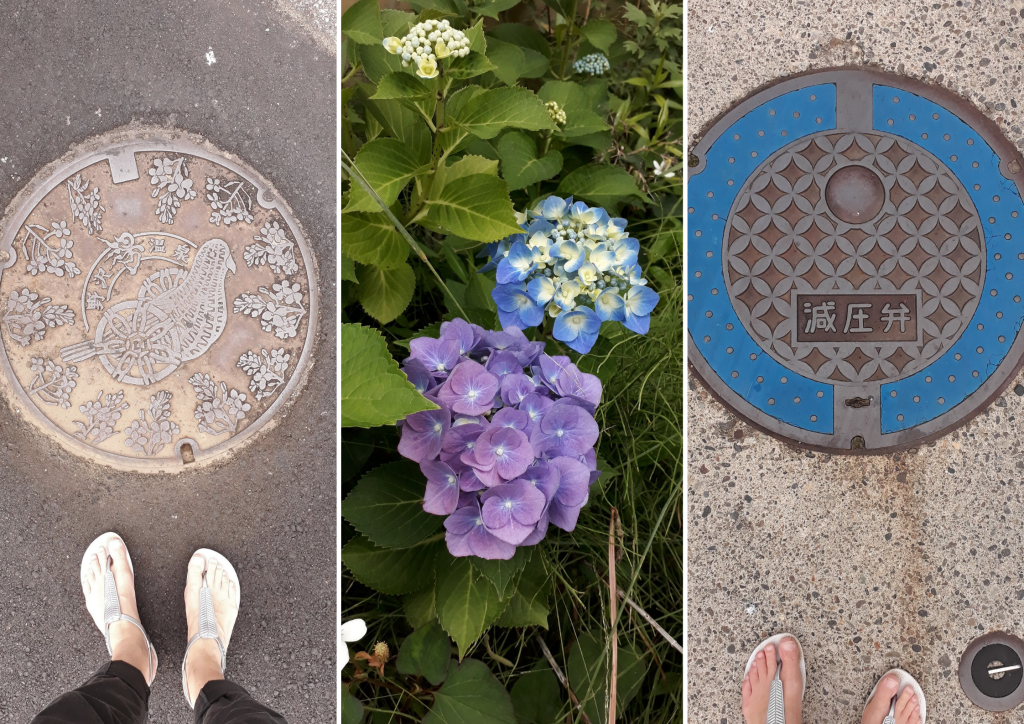
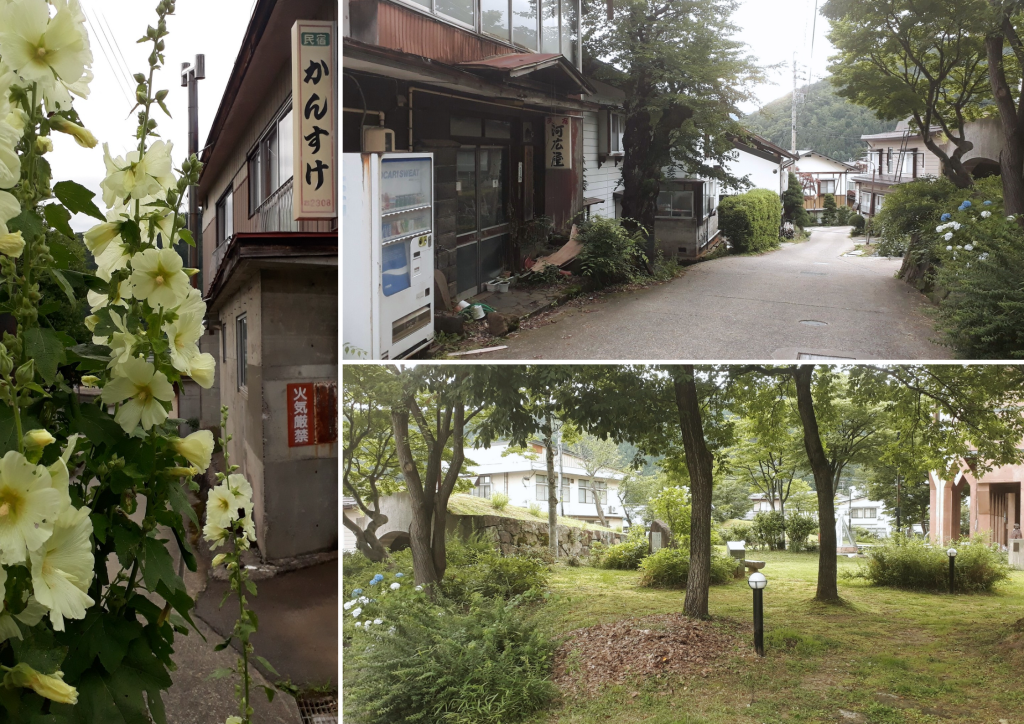
Cat
In Japan, there is no escape from cats ( neko 猫 in Japanese). I came across a super cute orange cat on a patch of grass somewhere between houses. She ran to me immediately, meowed and let me pet her. I talked to the cat for a while, sitting on the grass, her rubbing against my legs. Not sure if she was hungry and expected some food. I didn't have anything with me :( At the same time, she was wearing a collar, she belonged to someone. But I could sit there and pet her, as long as she liked it. A welcome break. Only now, writing this, I caught myself thinking that I never went back to that little garden and never saw that cat again, even though I said to myself then that I'll come back. I guess it wasn't meant to be... My warmest regards to you, kitty!
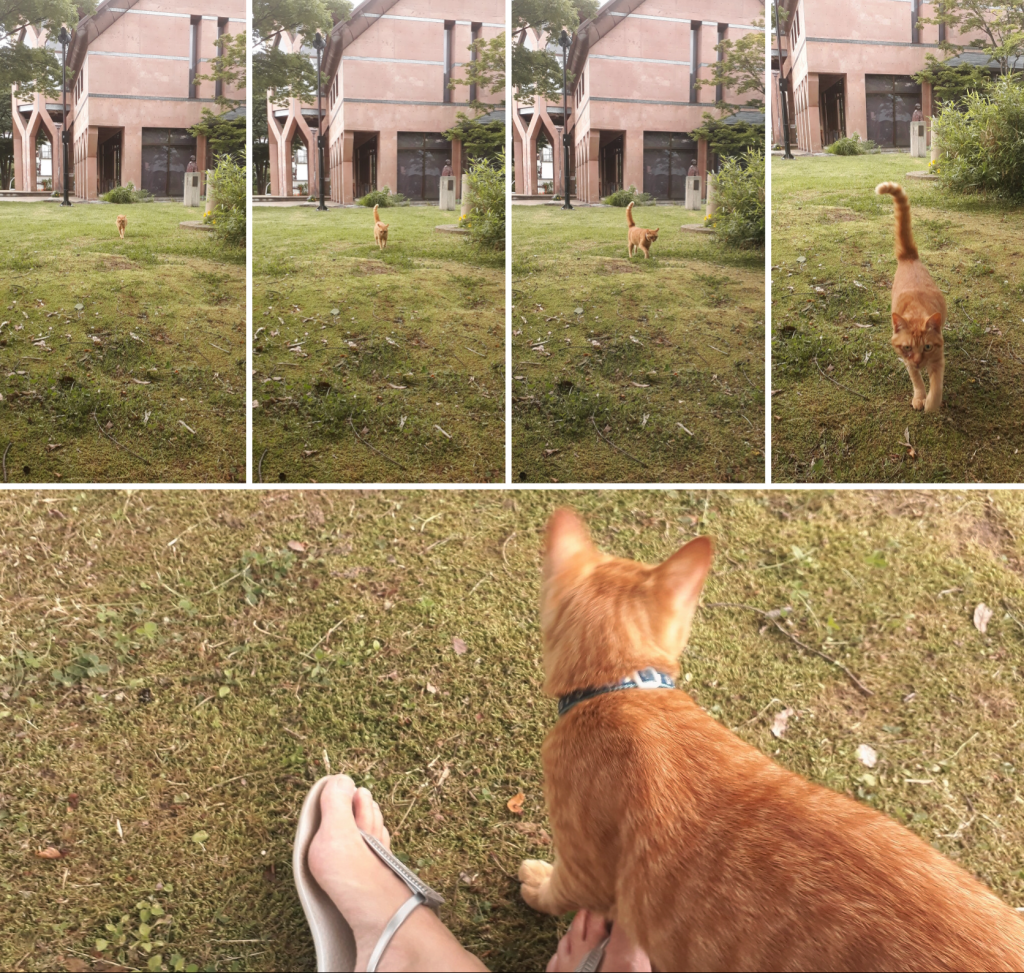
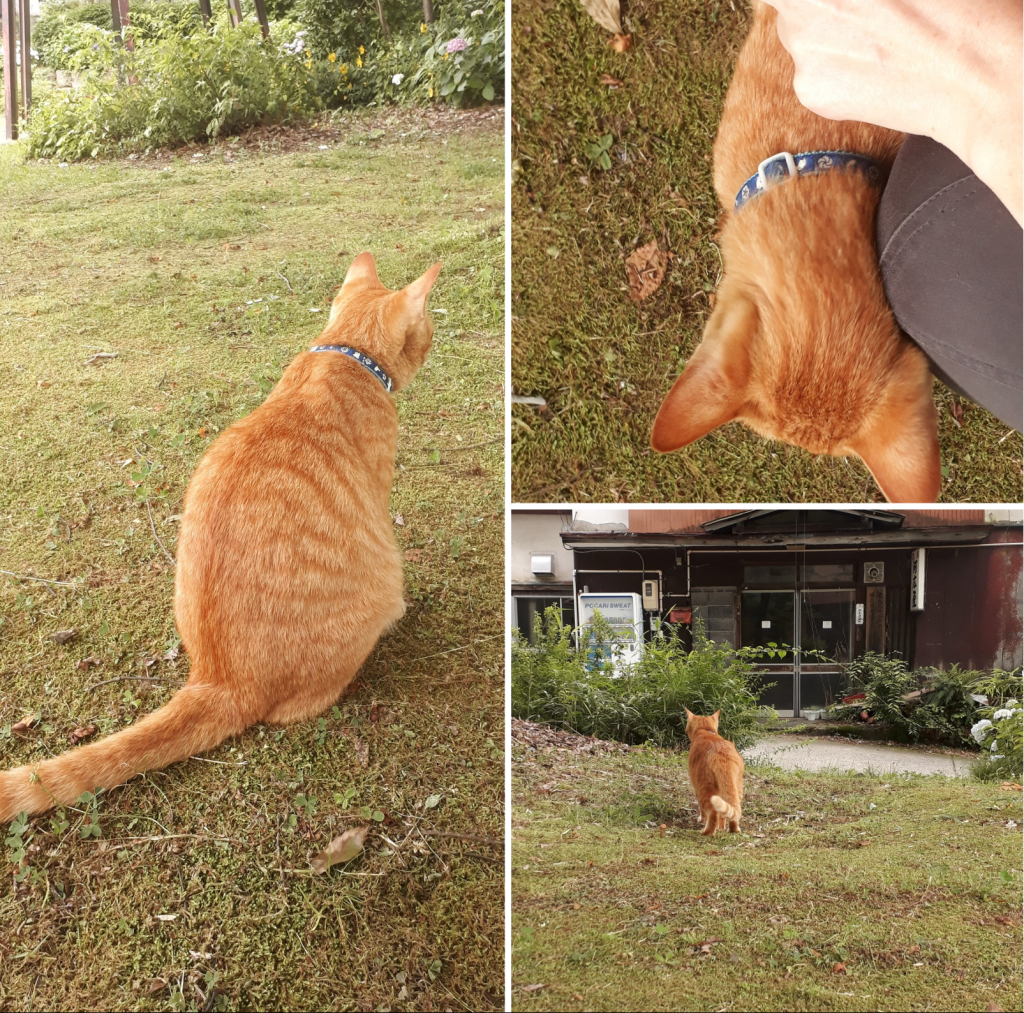
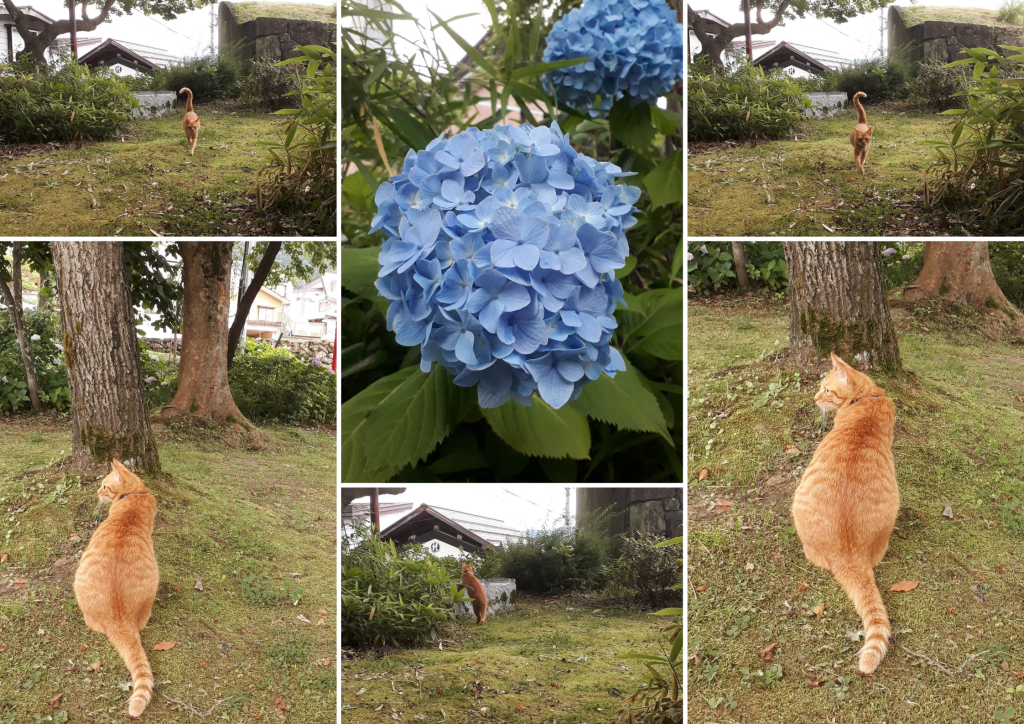
I took a few more photos on the way back and saw my first ever rice field, located on a plateau made of big rocks. There was some background story with those plateaus I later heard from the locals but I have forgotten by now. Perhaps it's written somewhere? Something about them being used for something else before and are now turned into rice fields, or the other way around, the rice fields are disappearing and other things are being built on those patches of land? Really, I cannot remember. At the end of my day trip, I felt the exhaustion again and my next day was supposed to be my first work day as well. Exciting! But first rest.
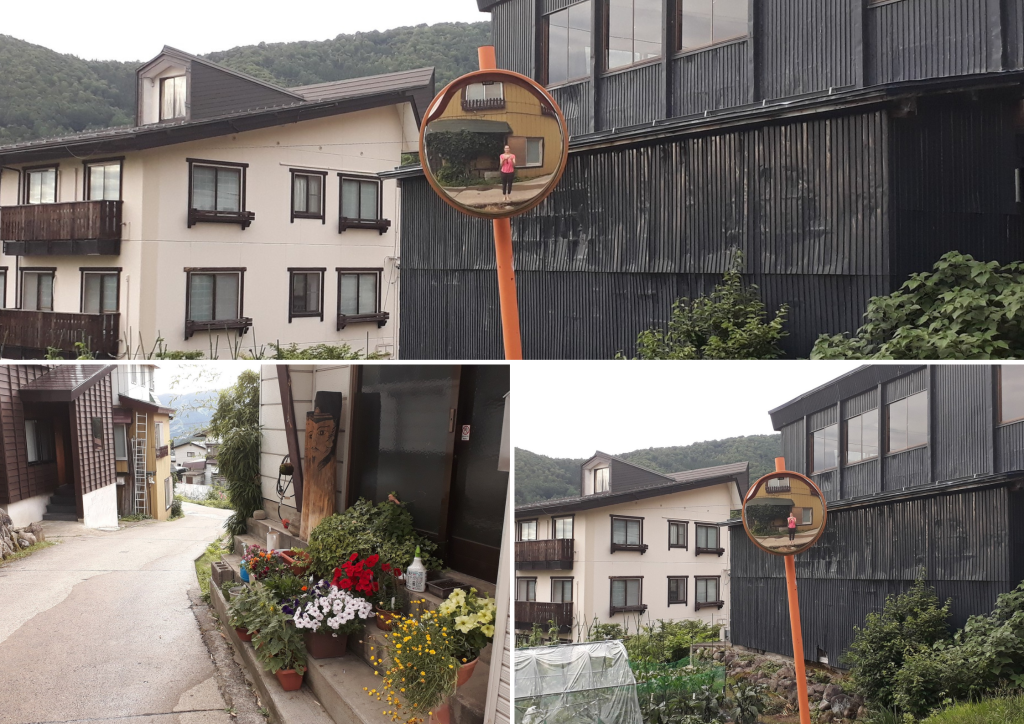
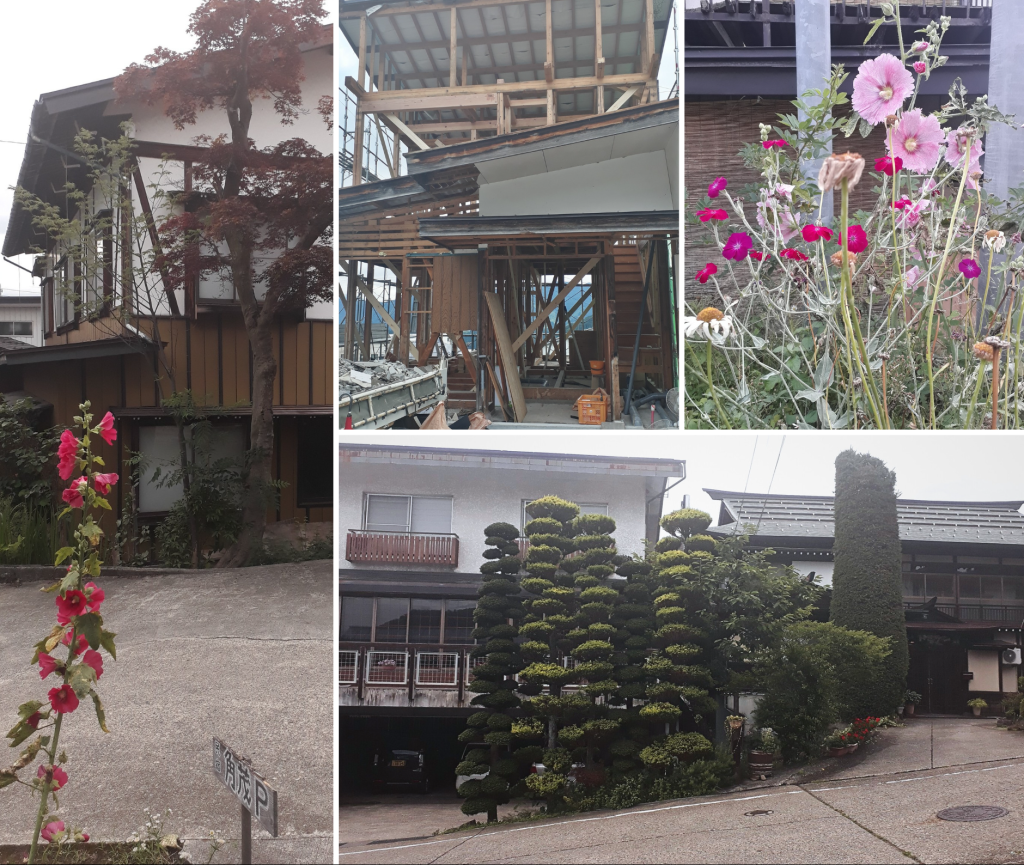
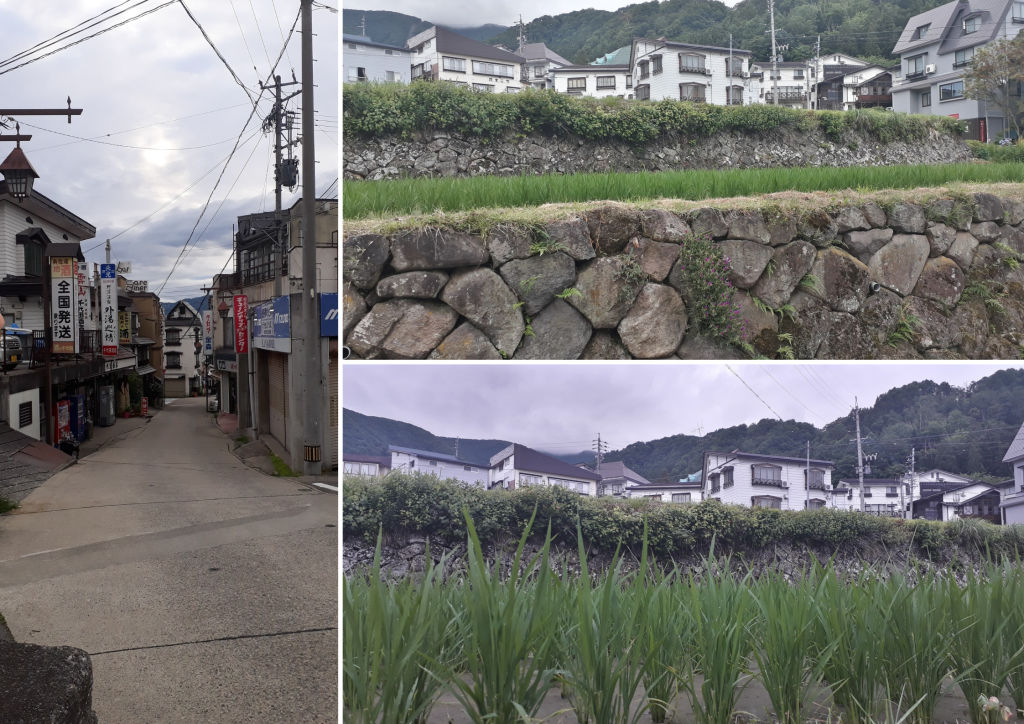
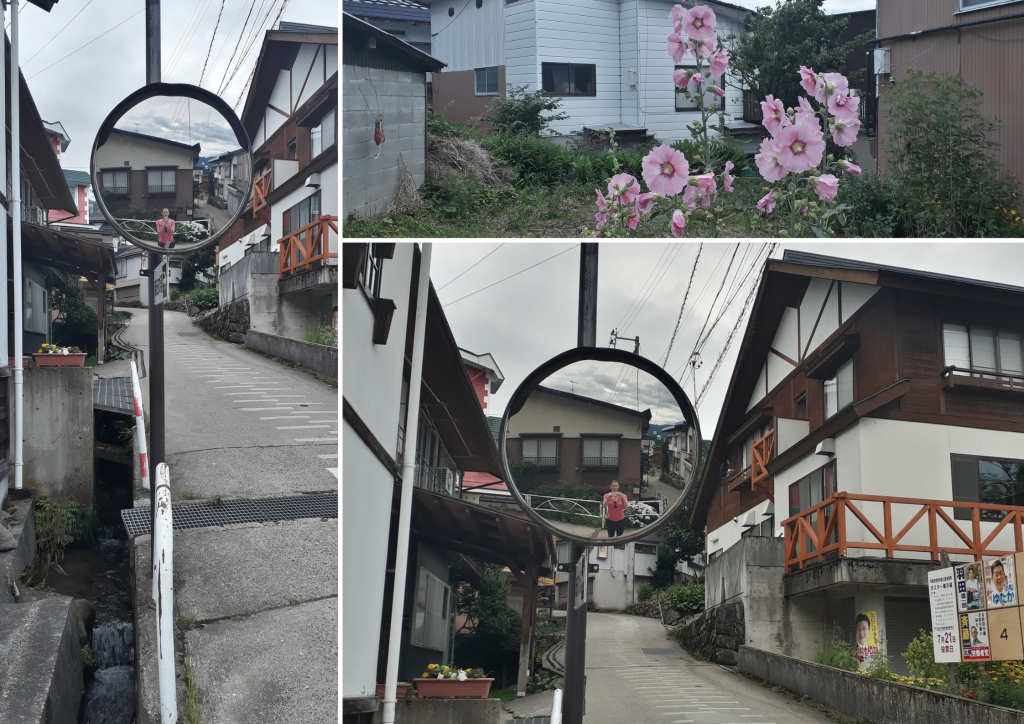
For those interested in nature, I'll leave a small gallery of surrounding nature and plants I discovered during my first exploration trip in Japan.
